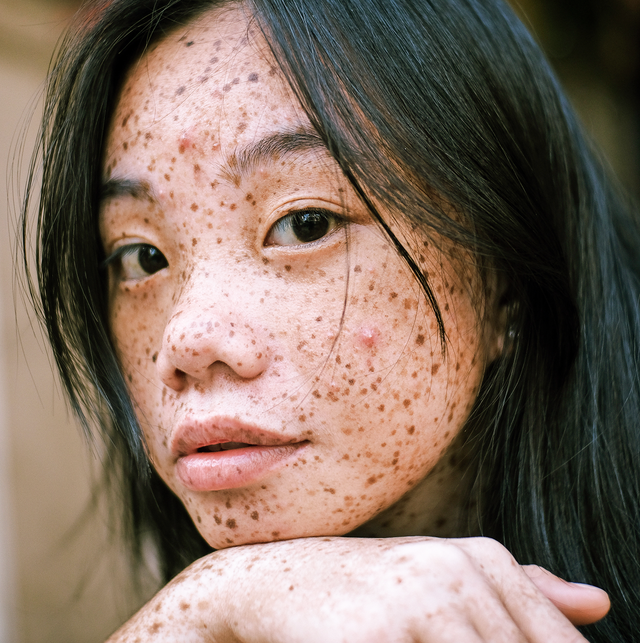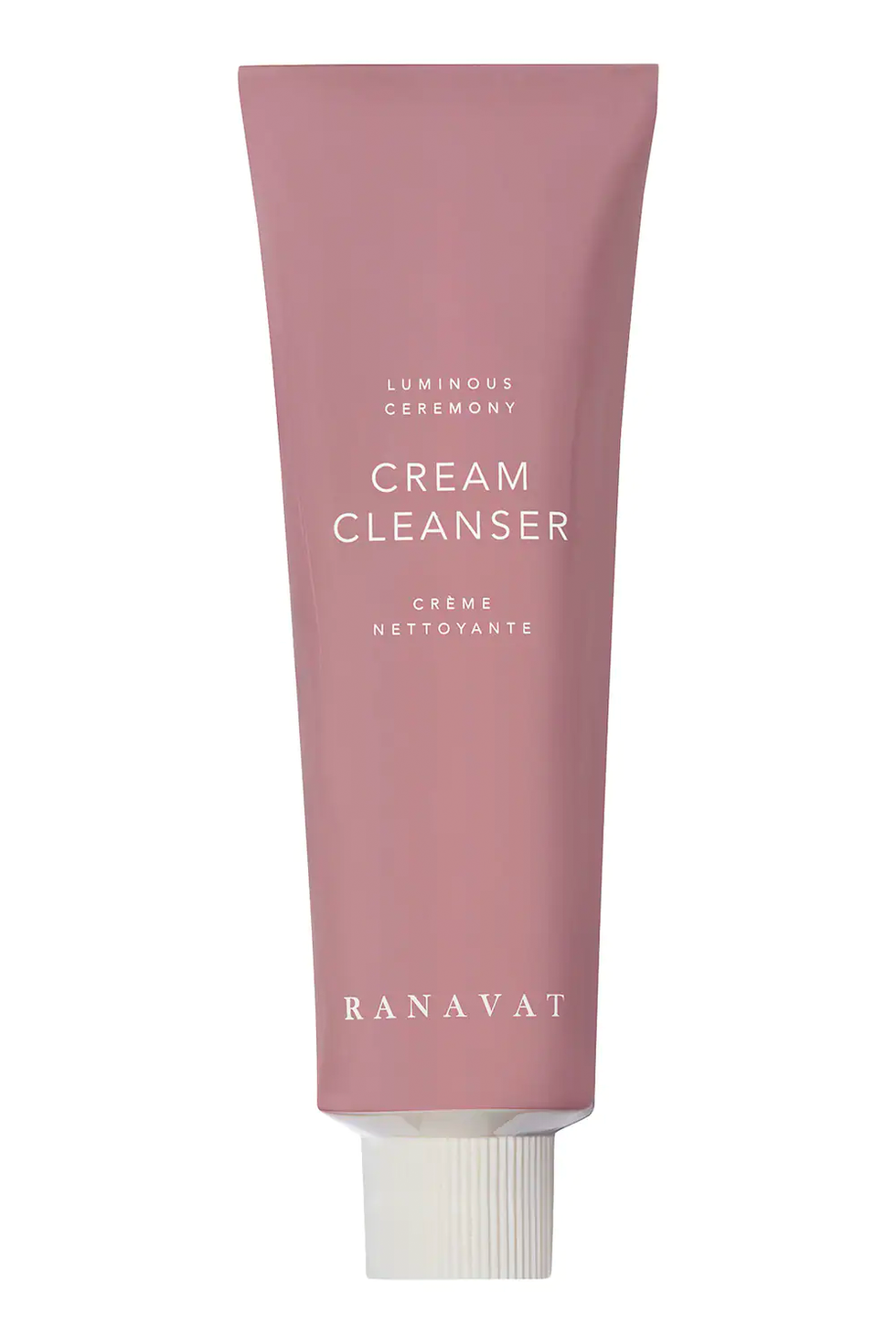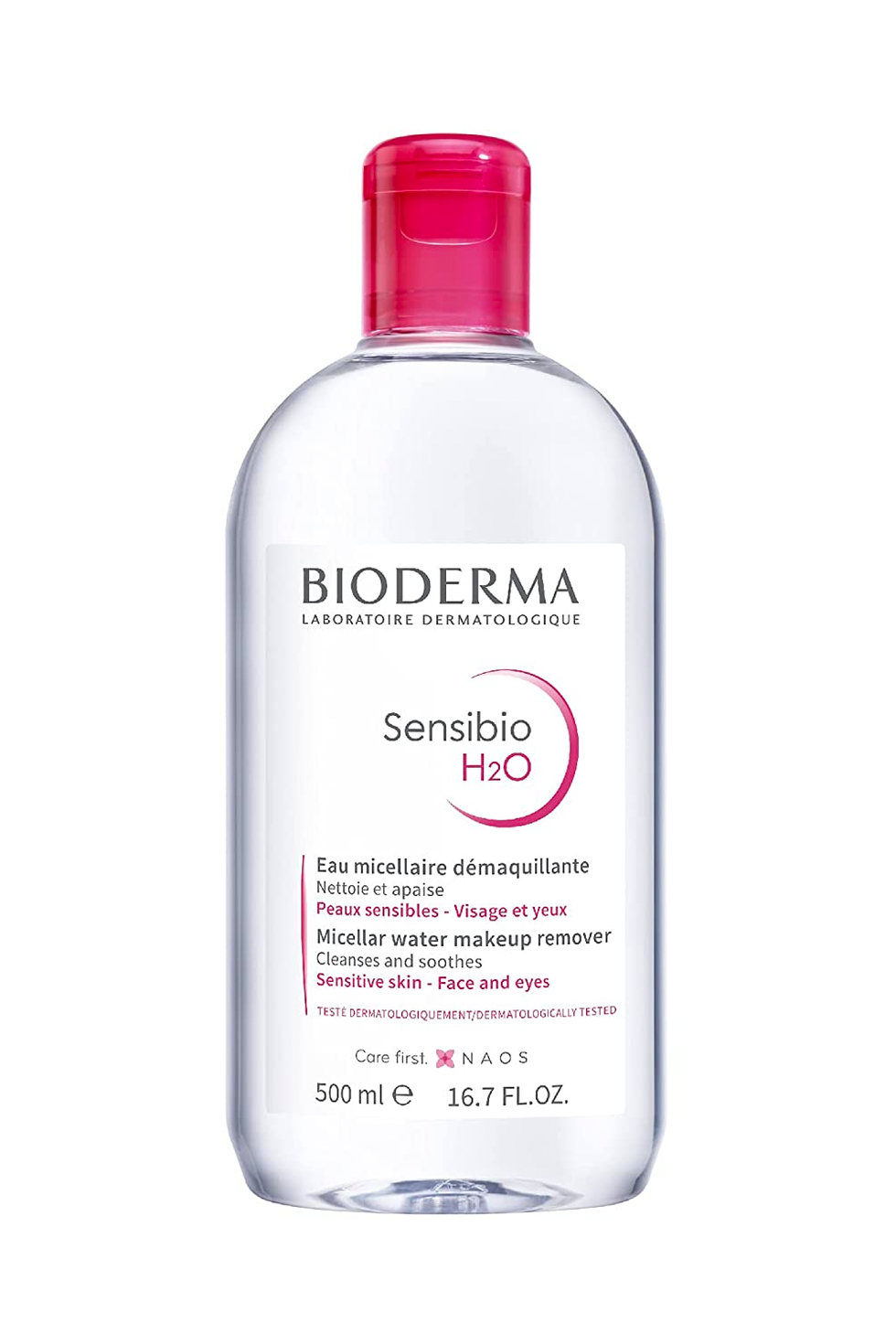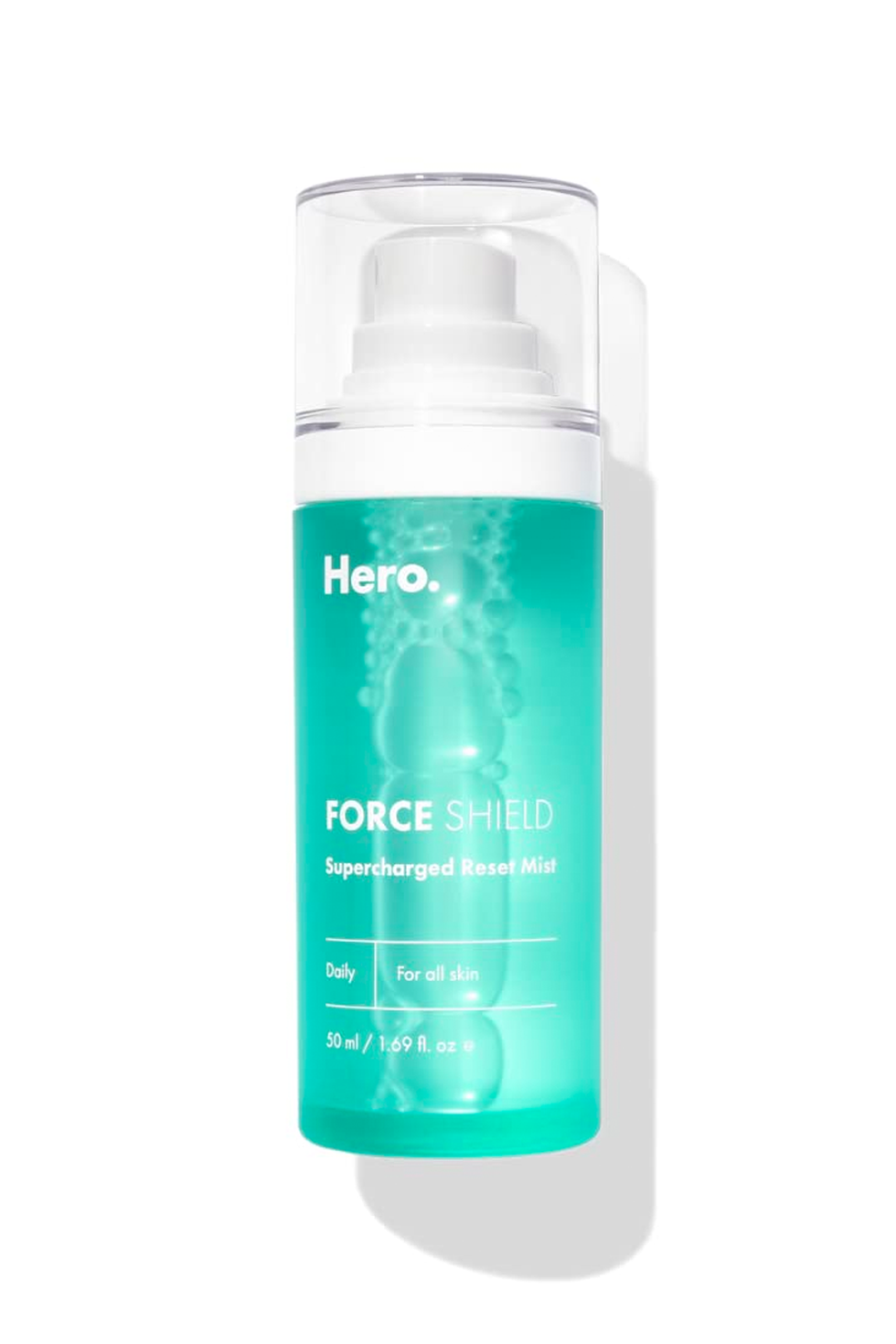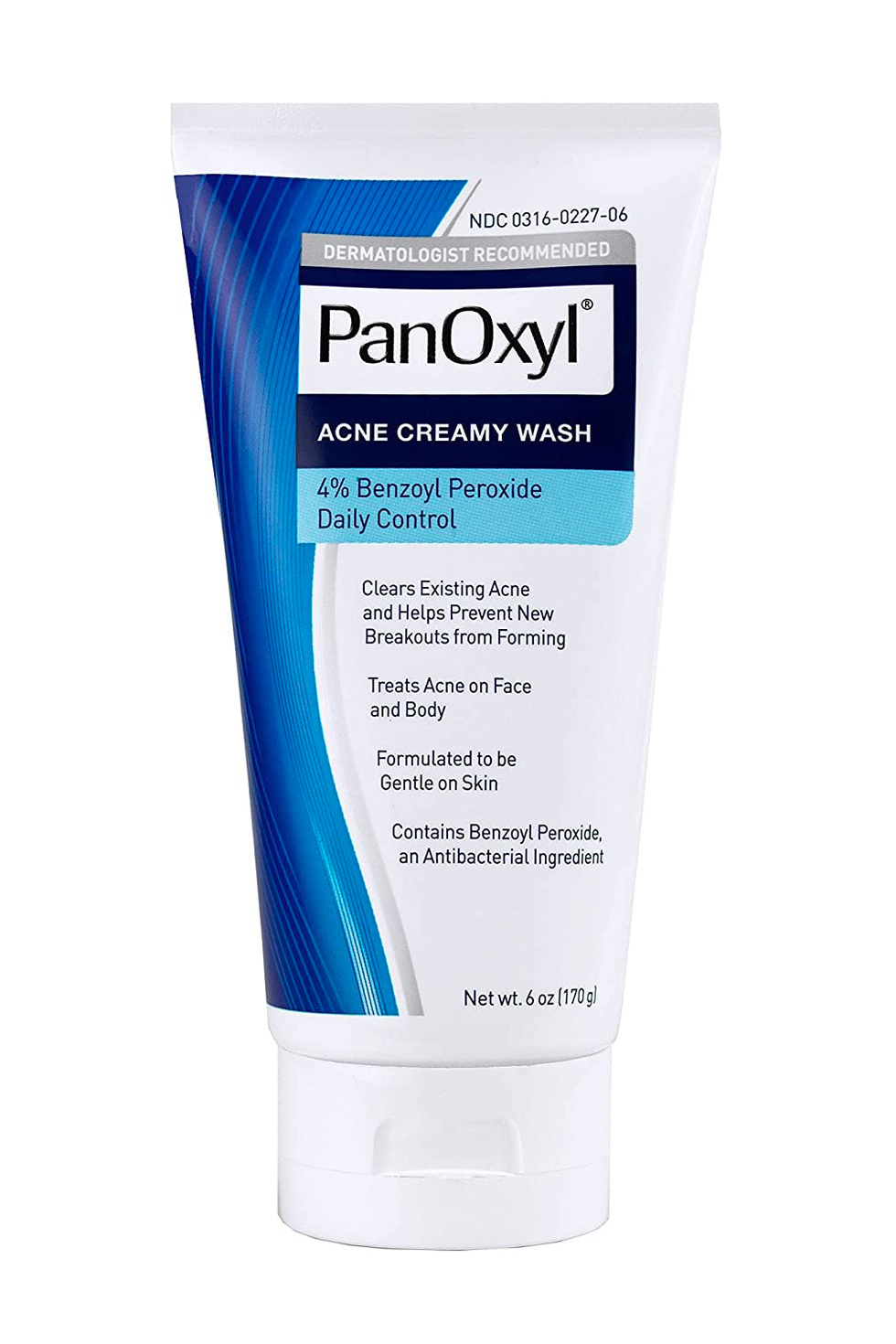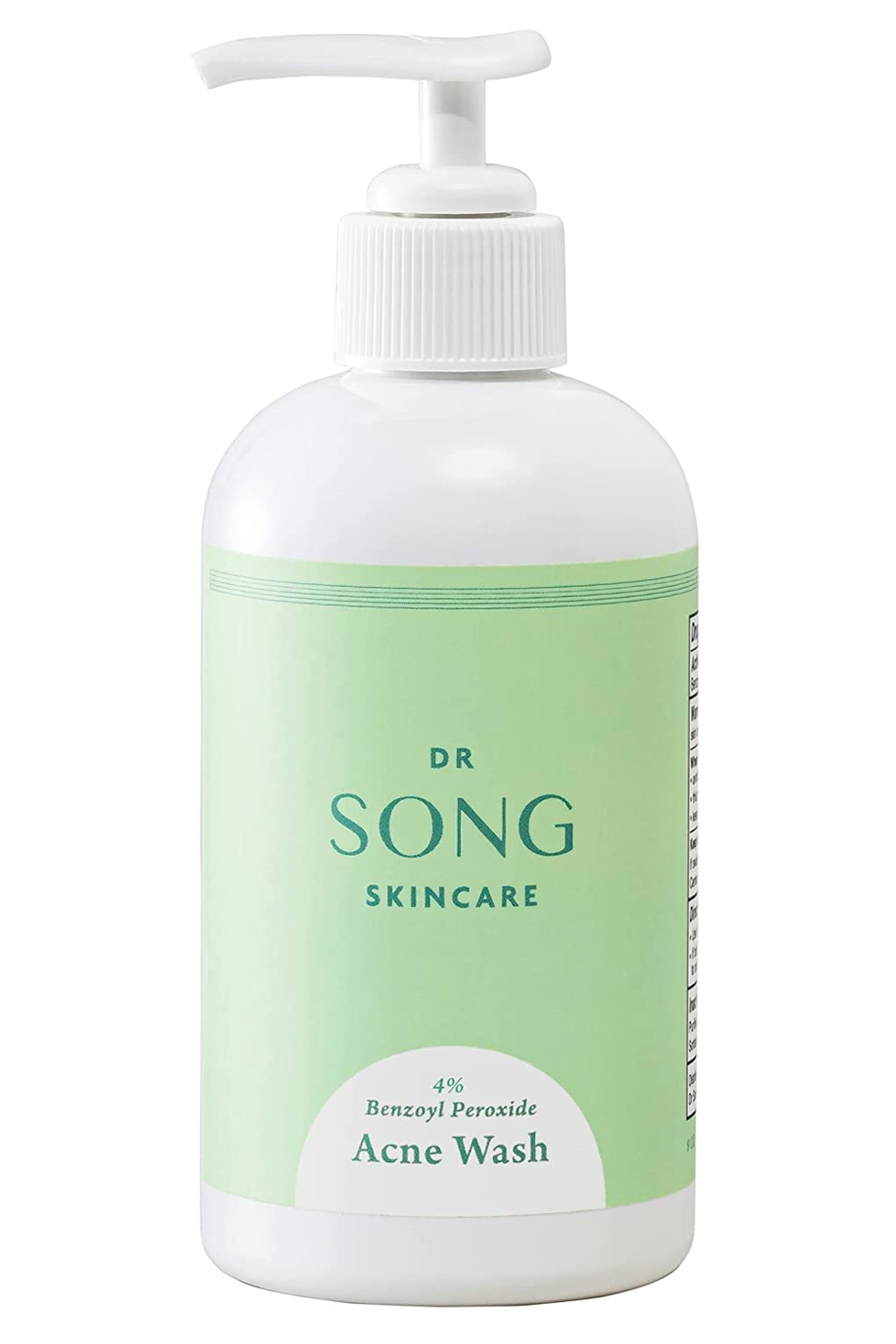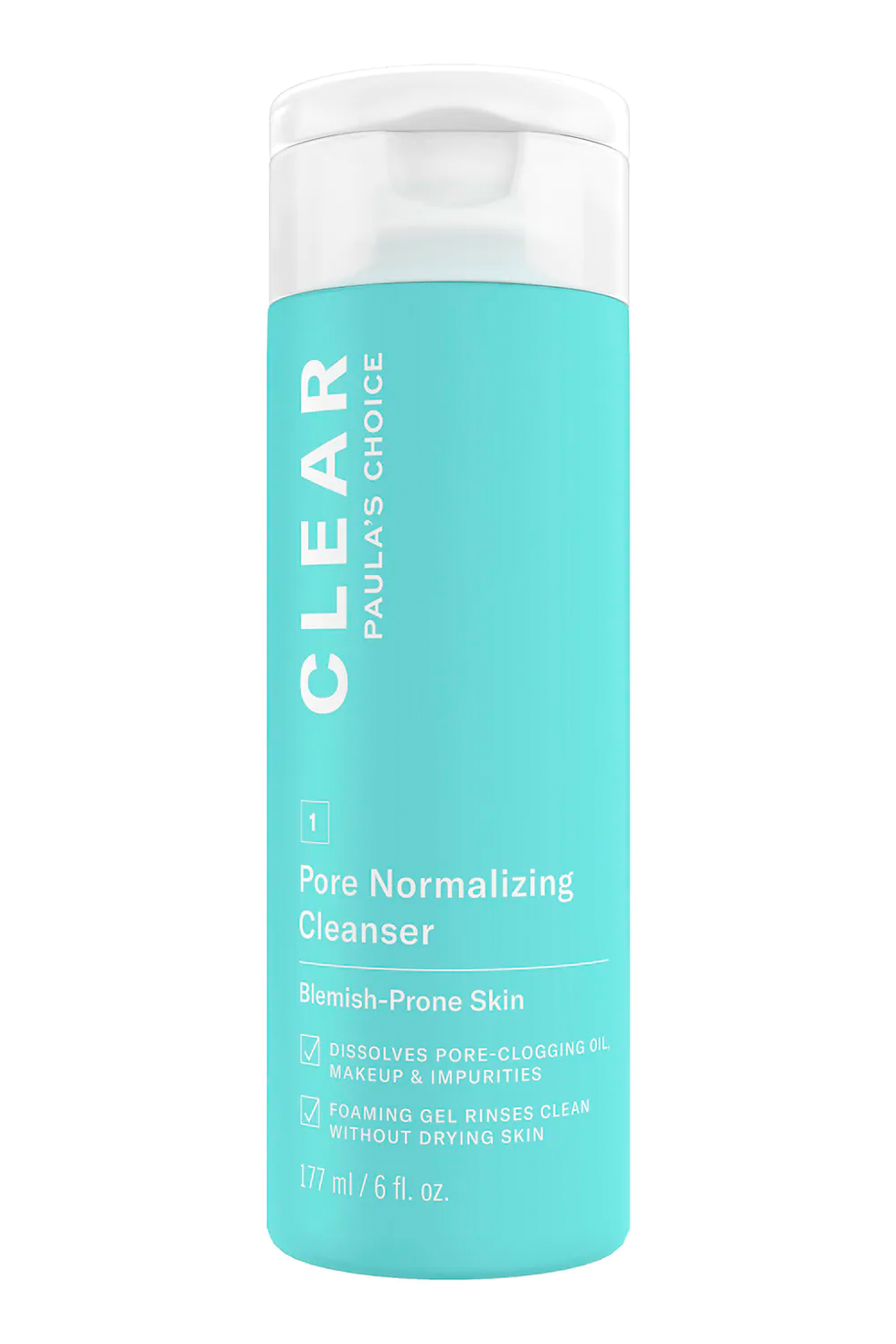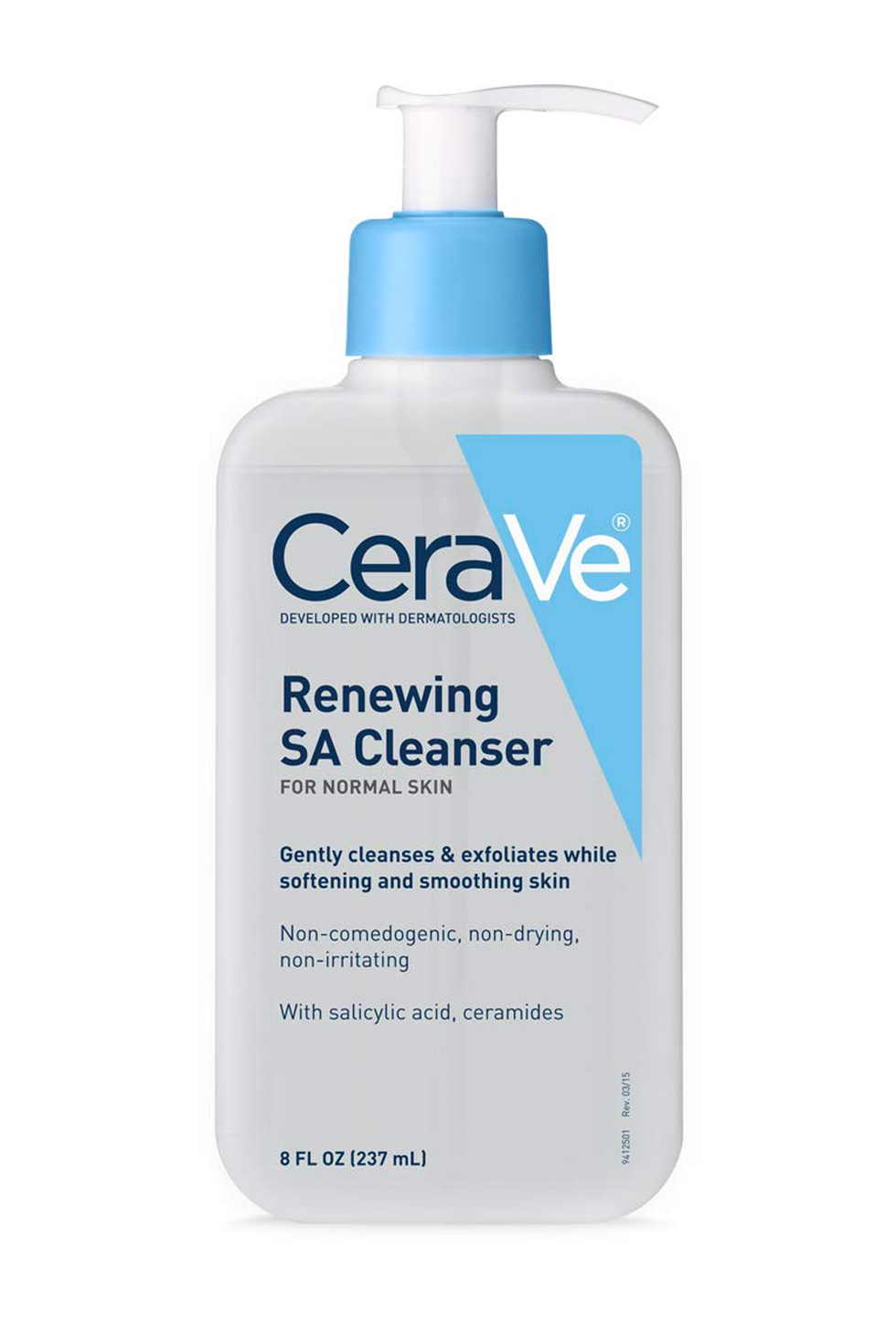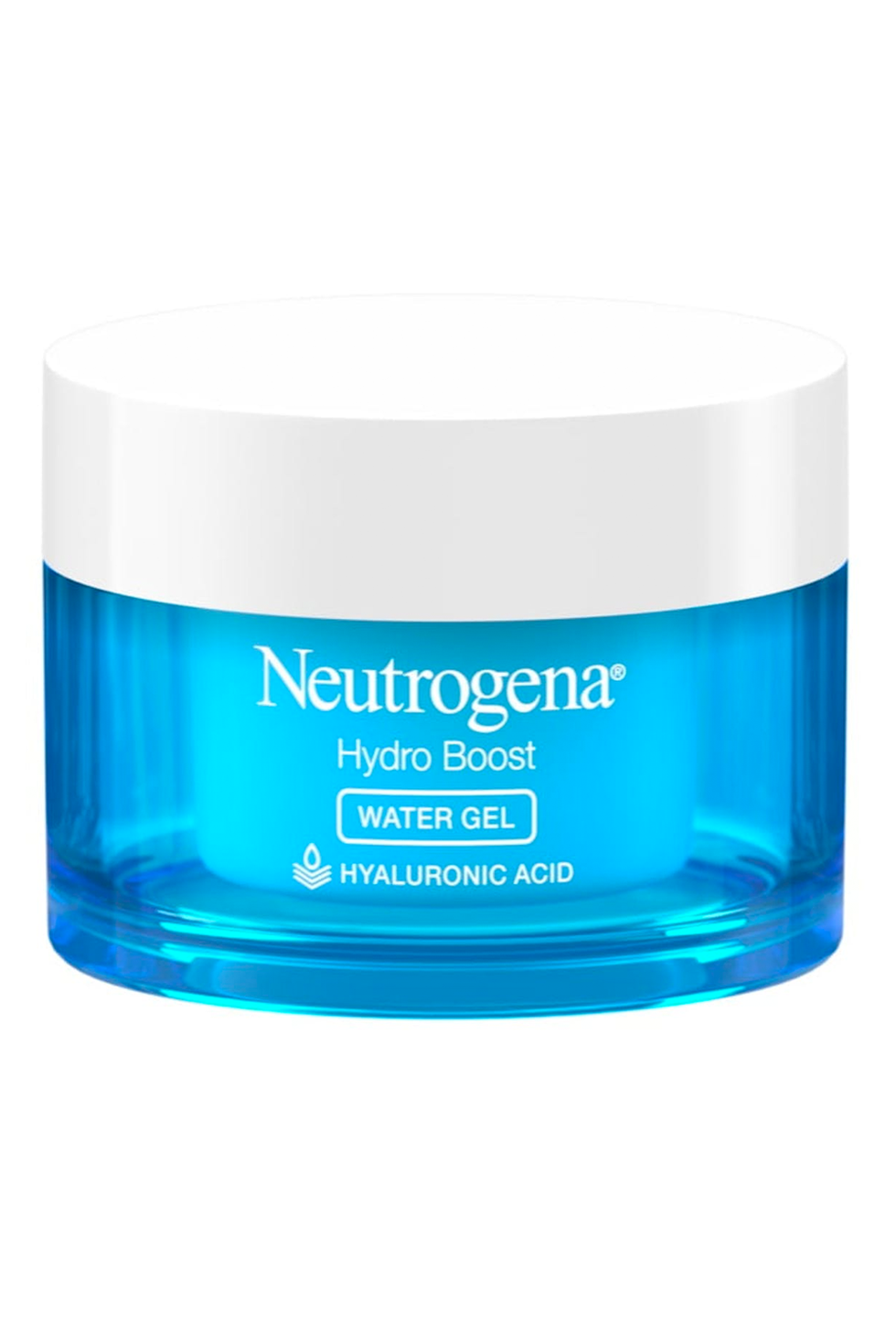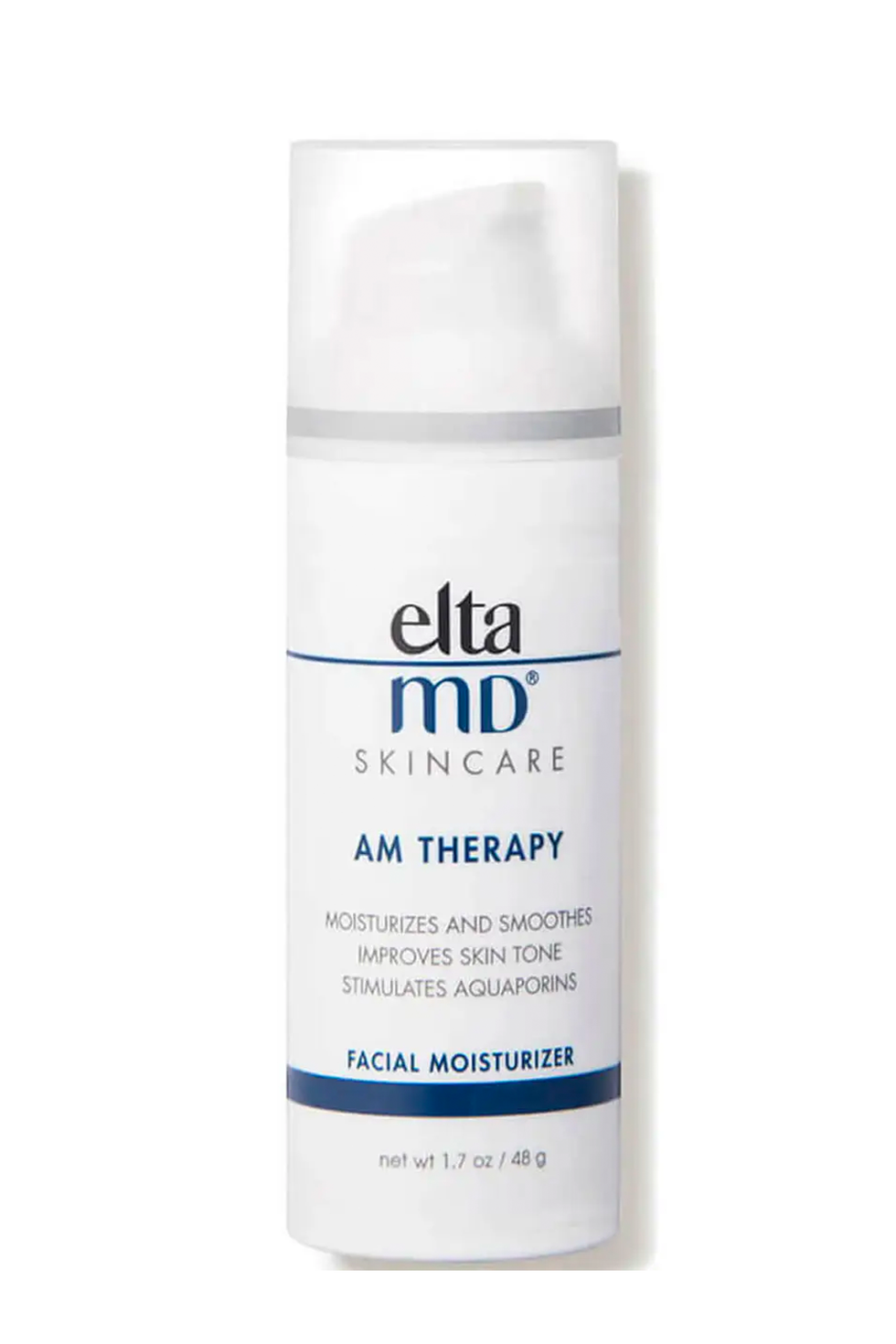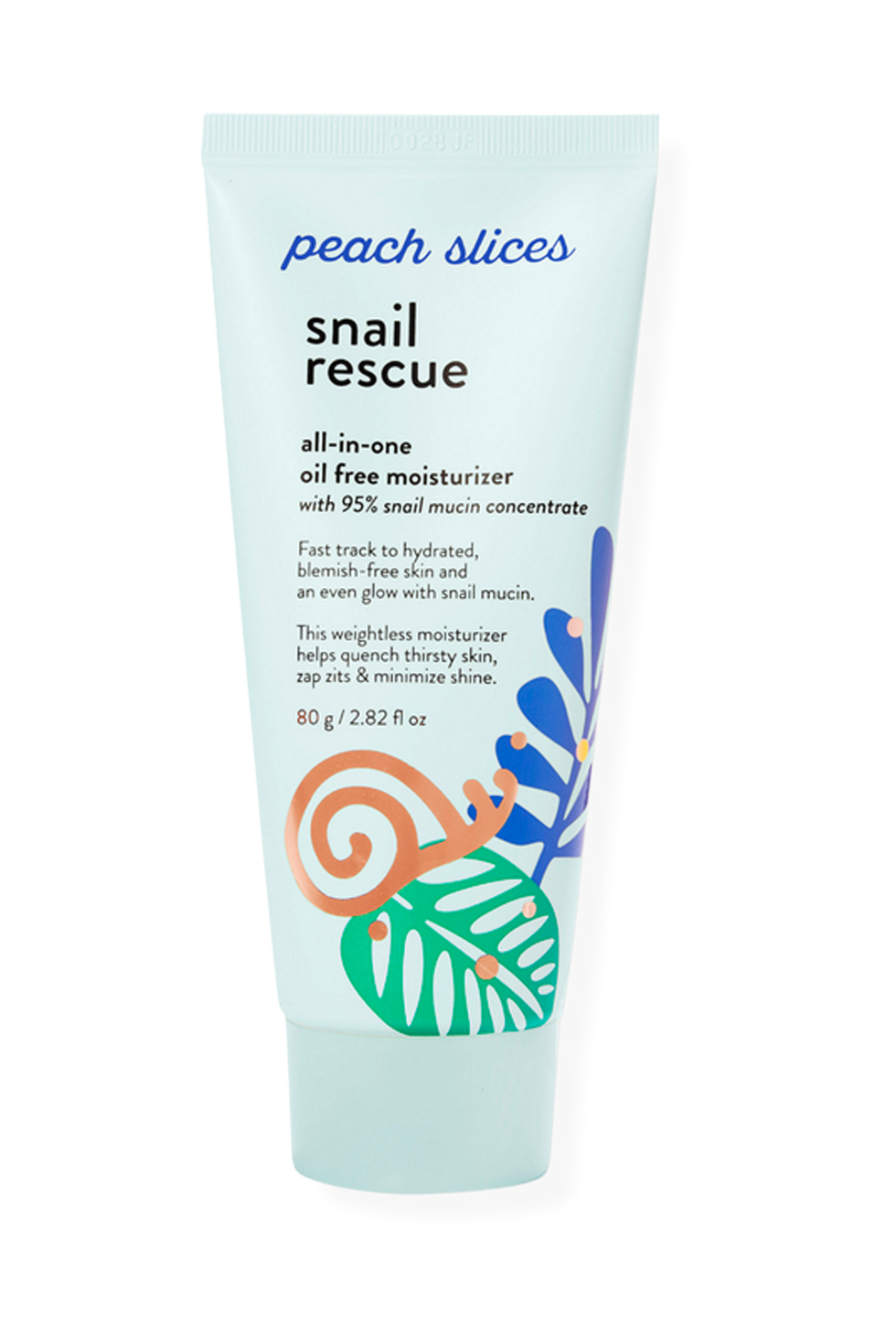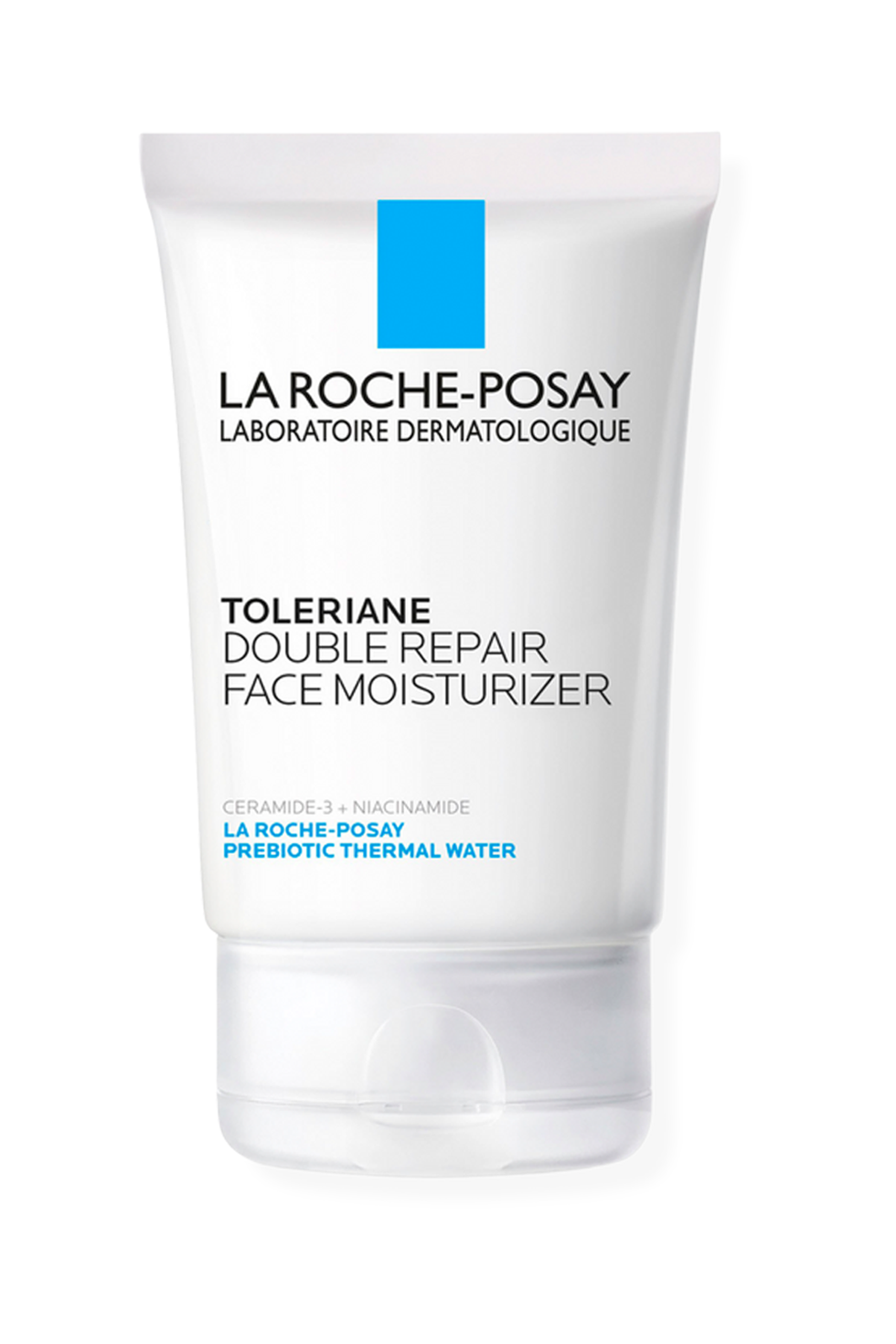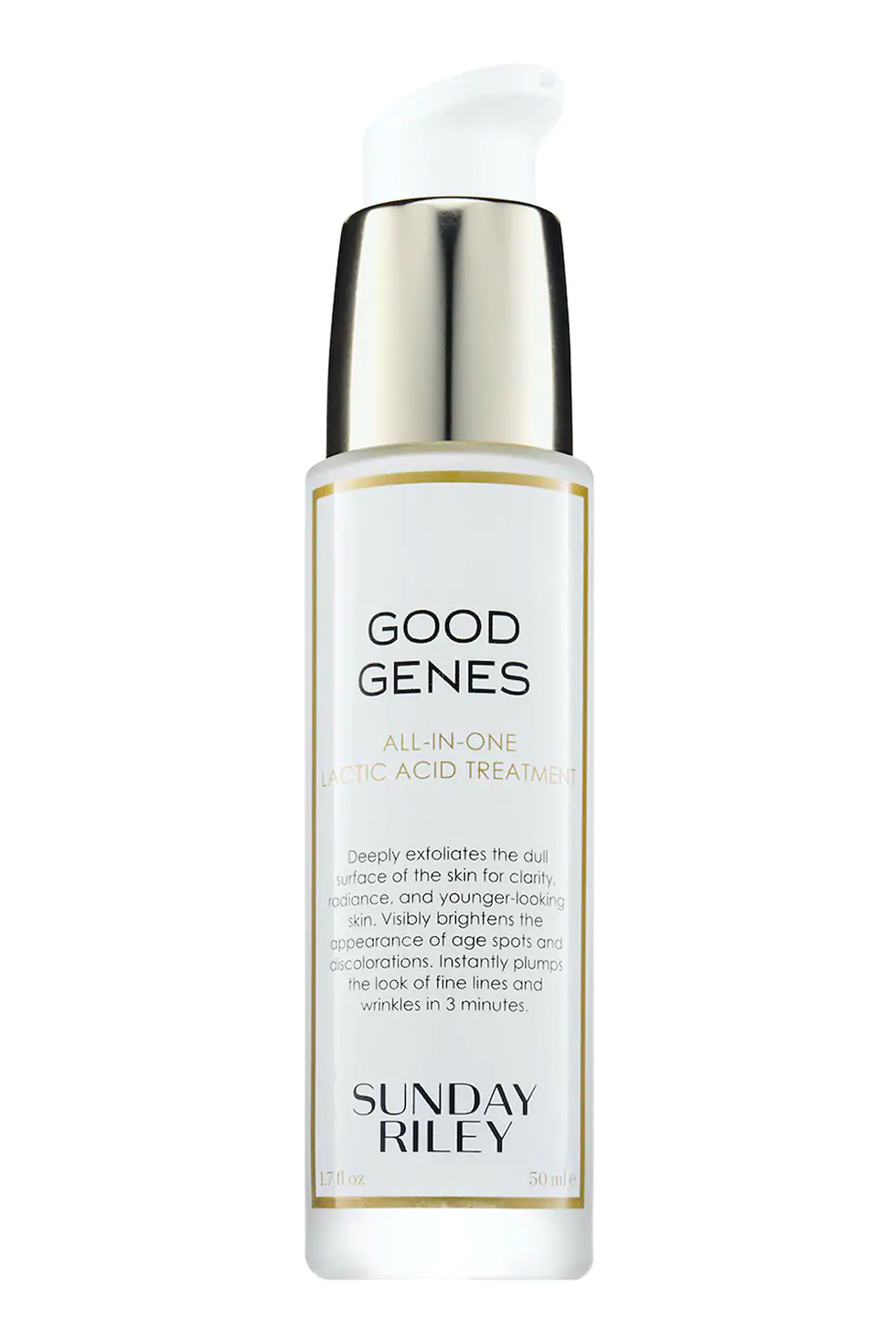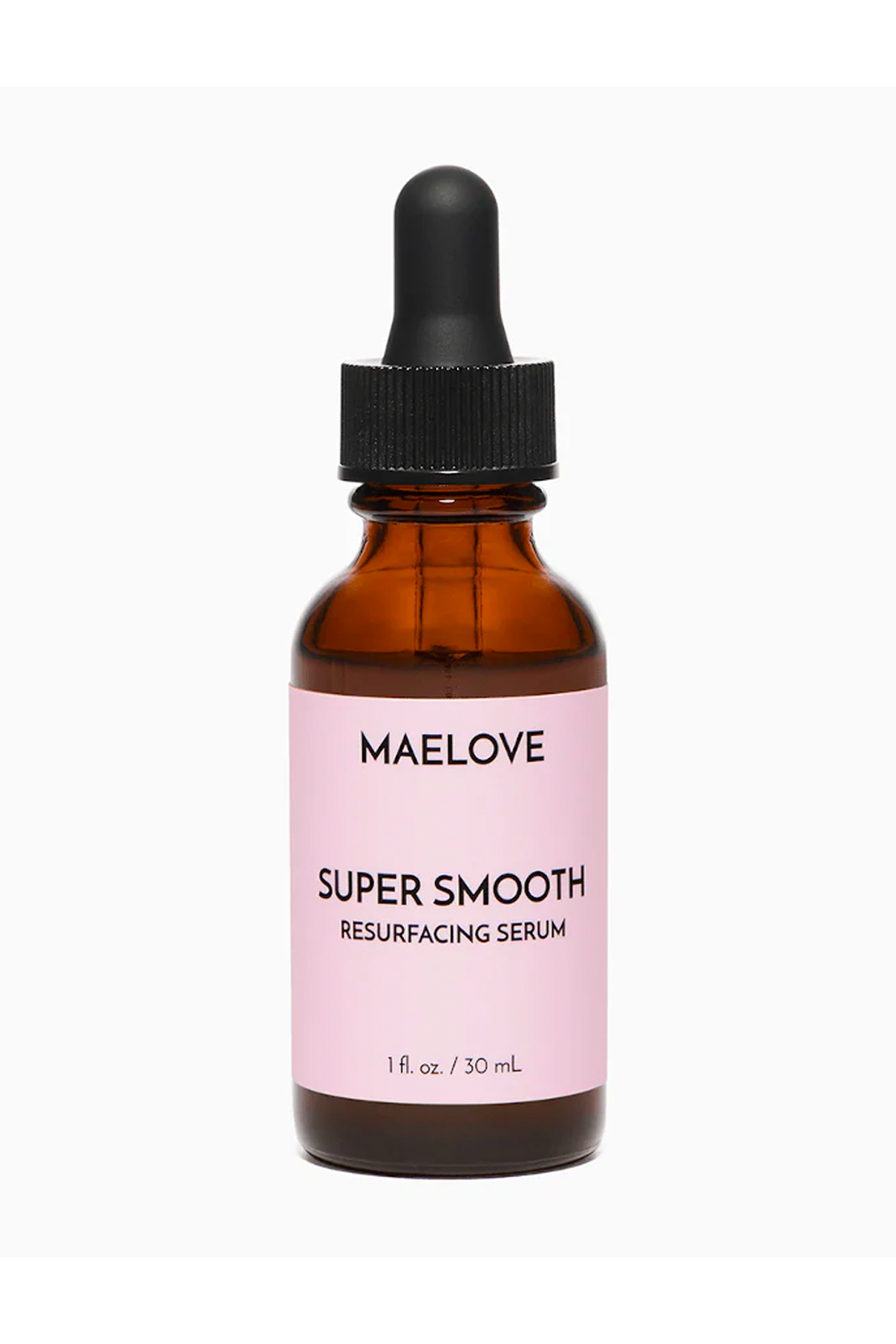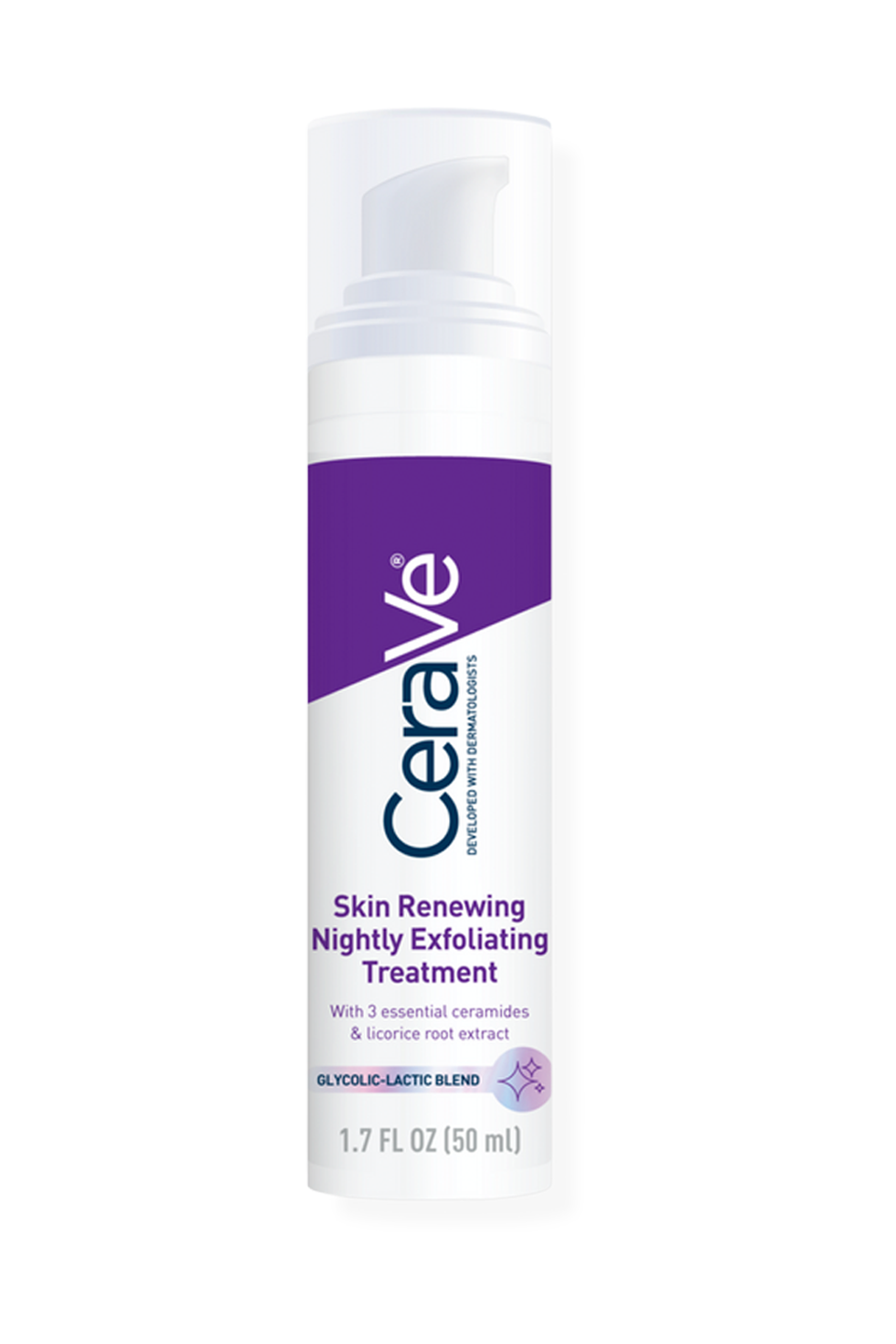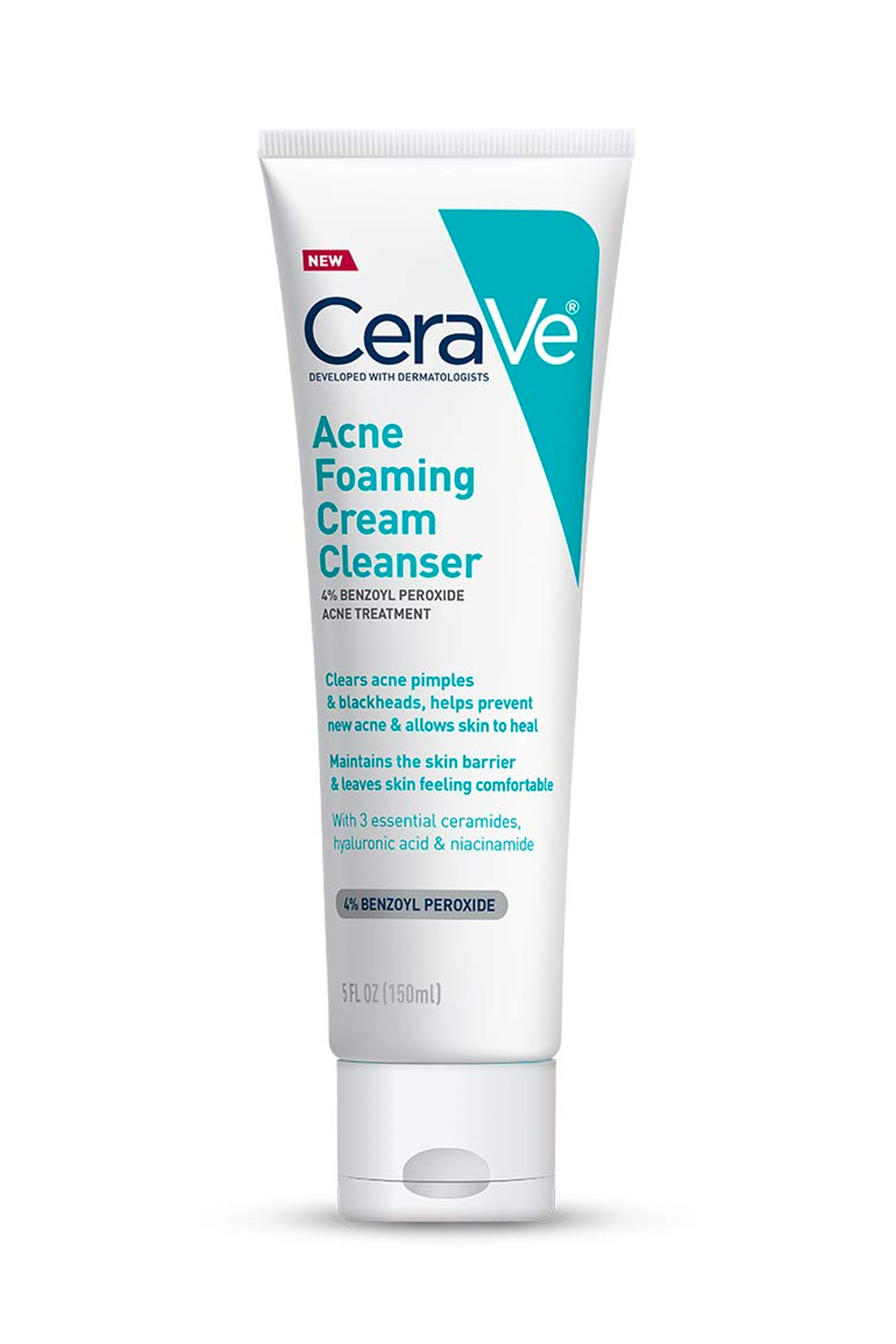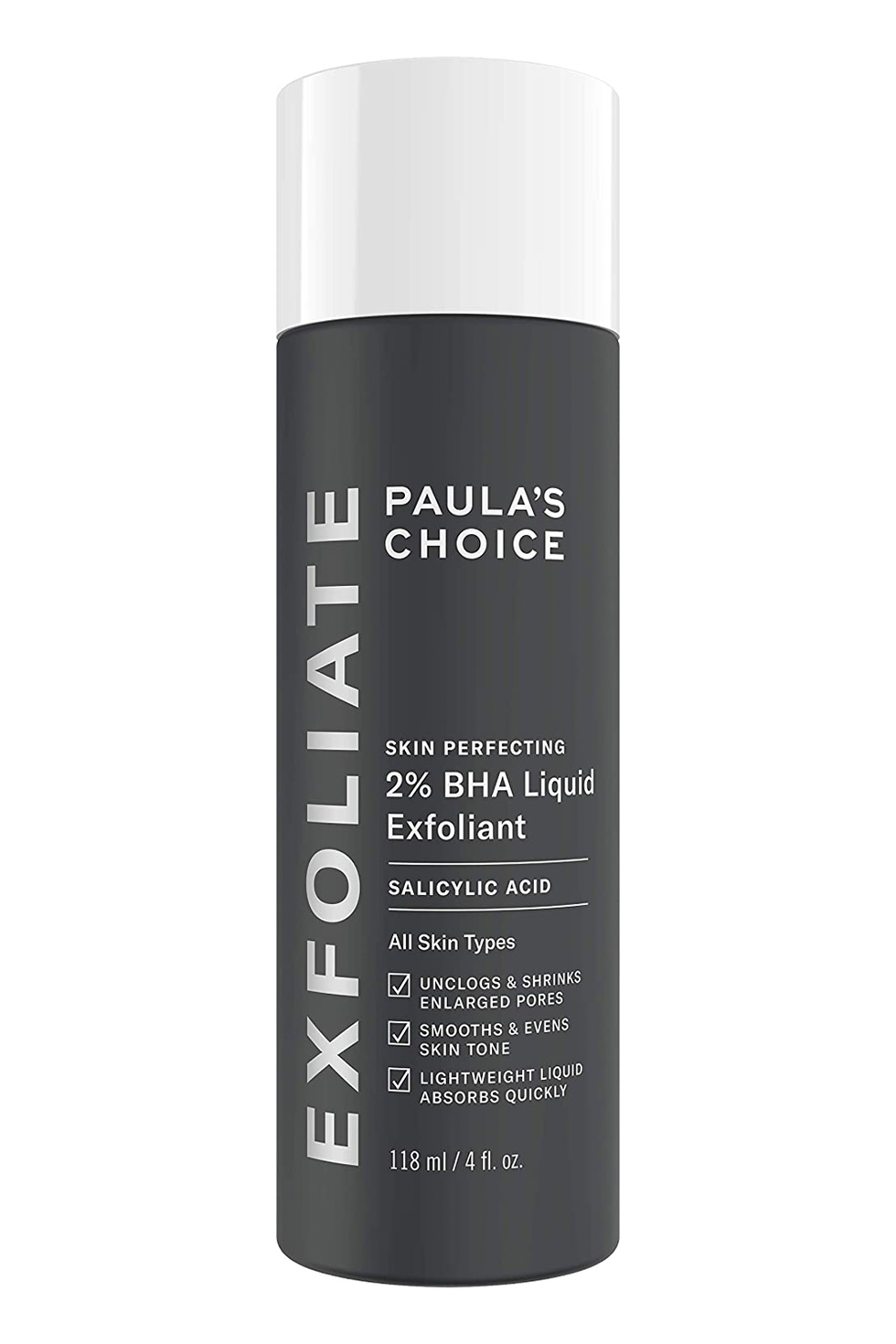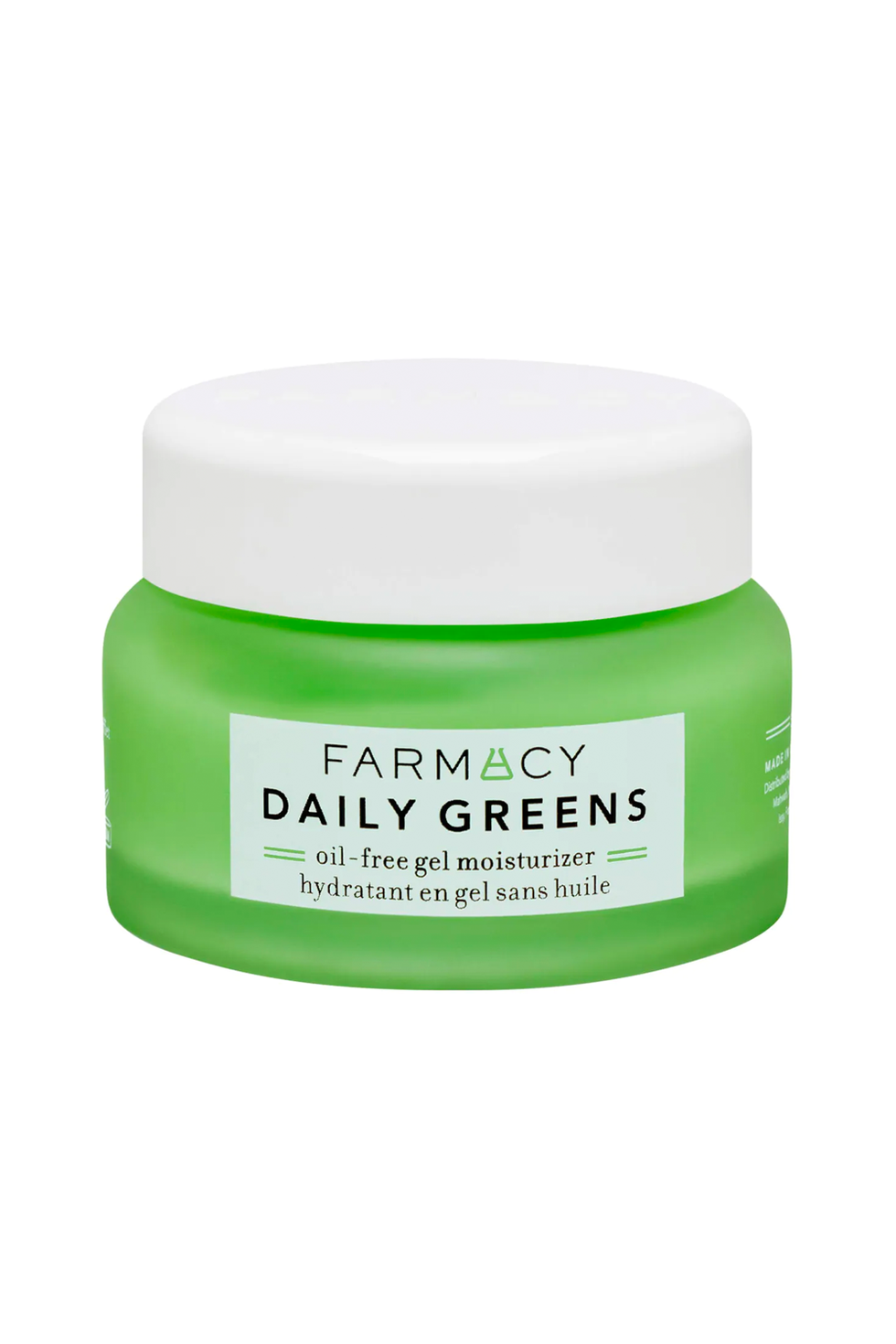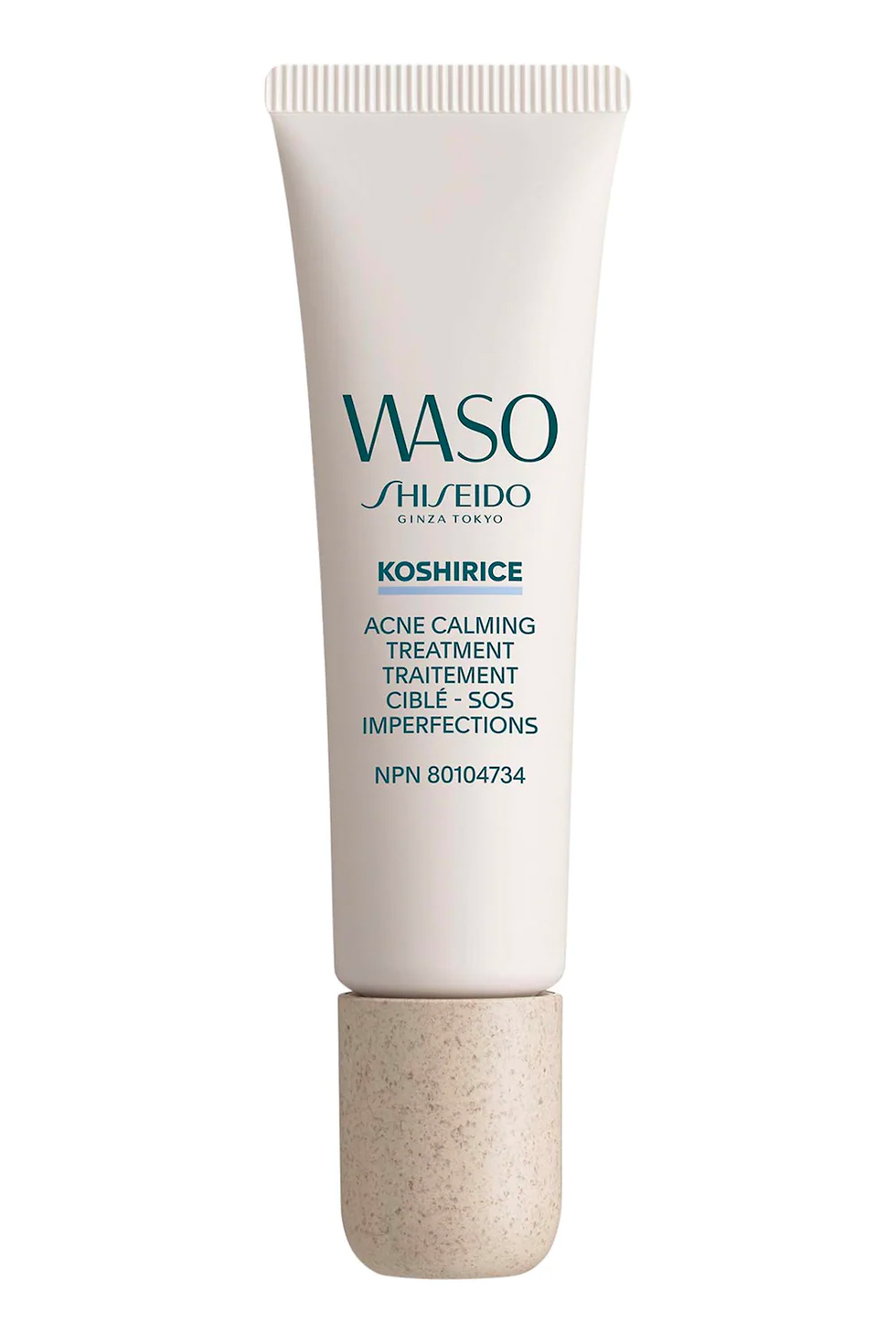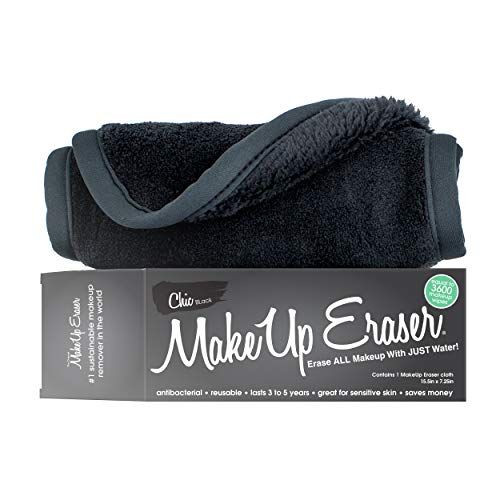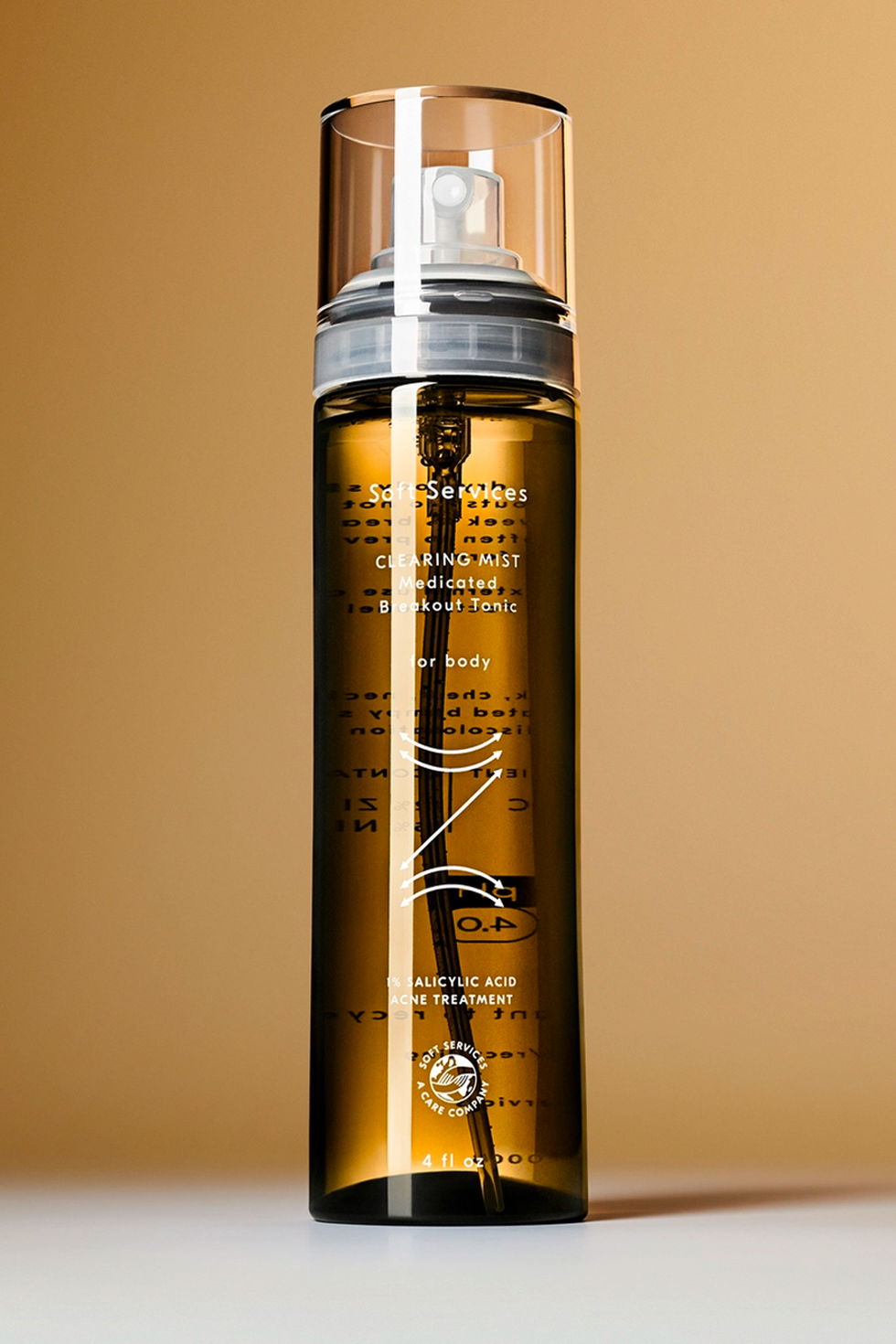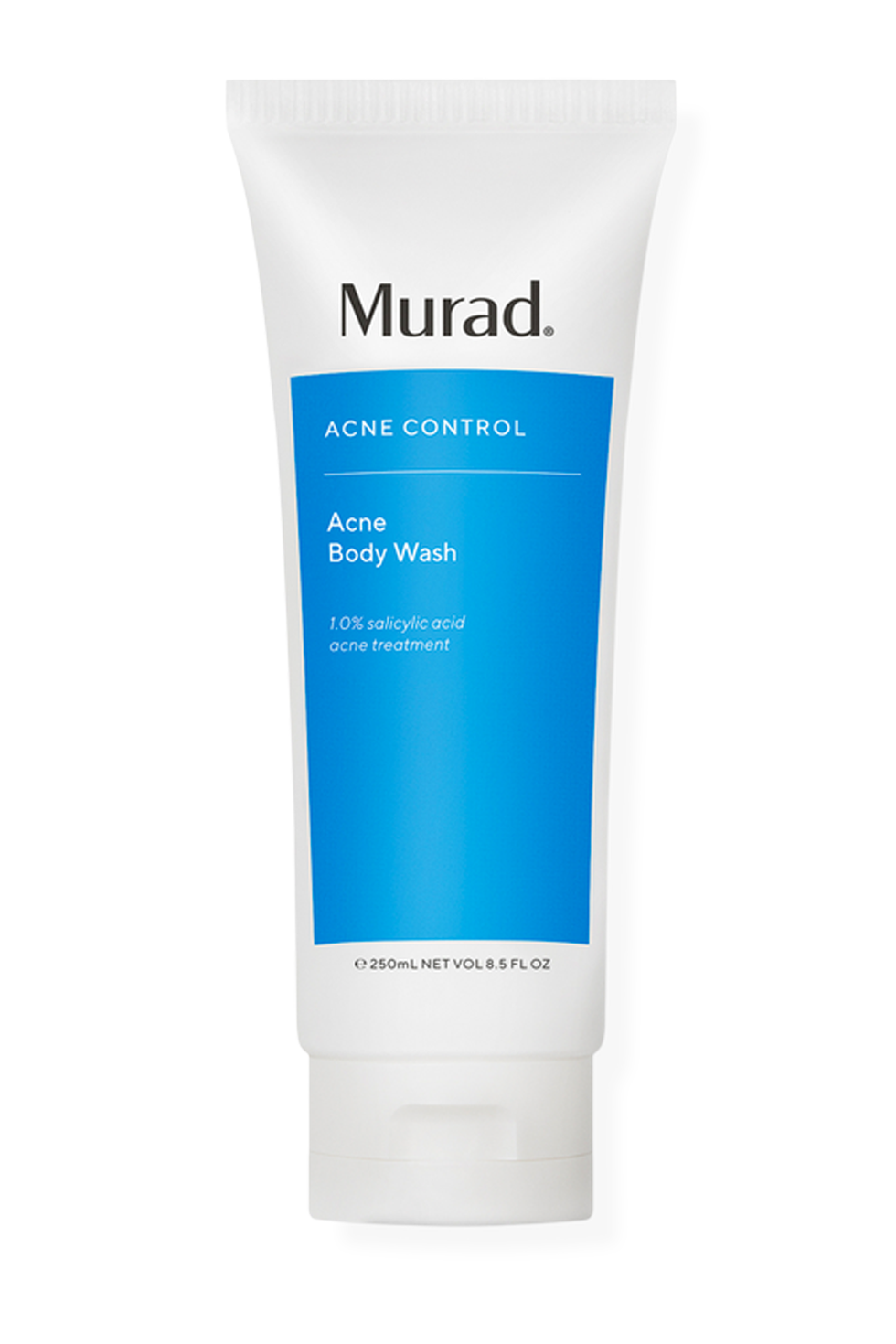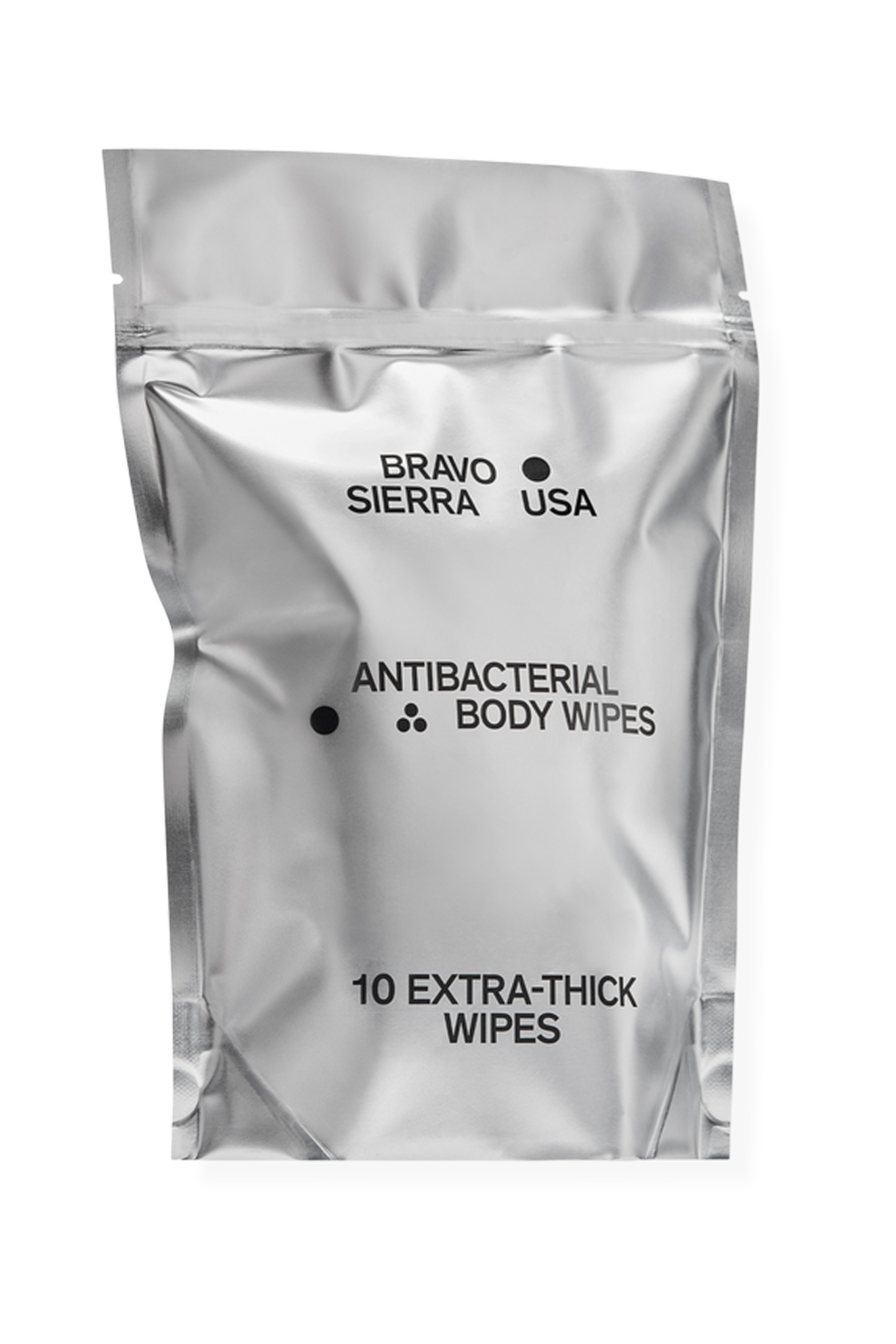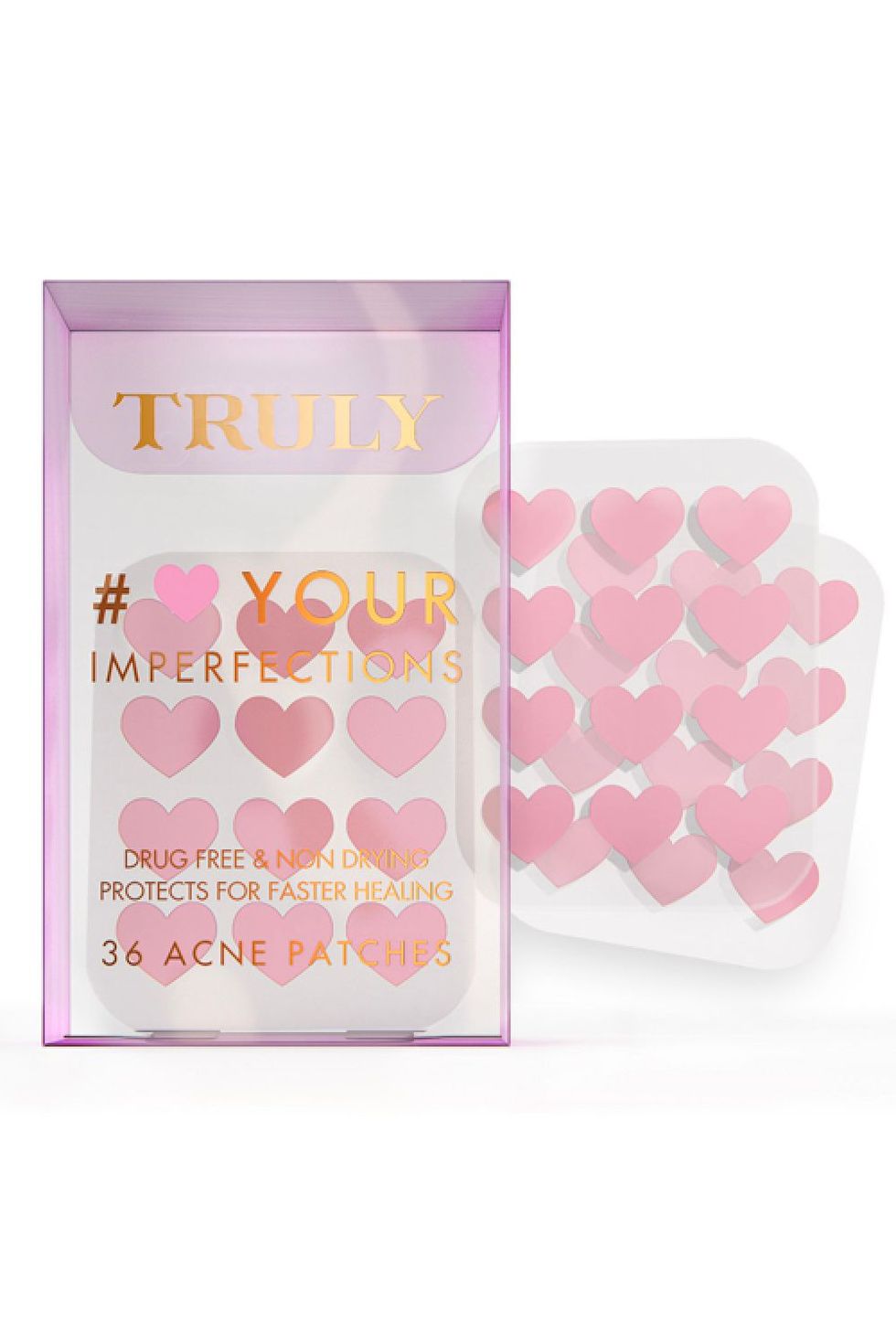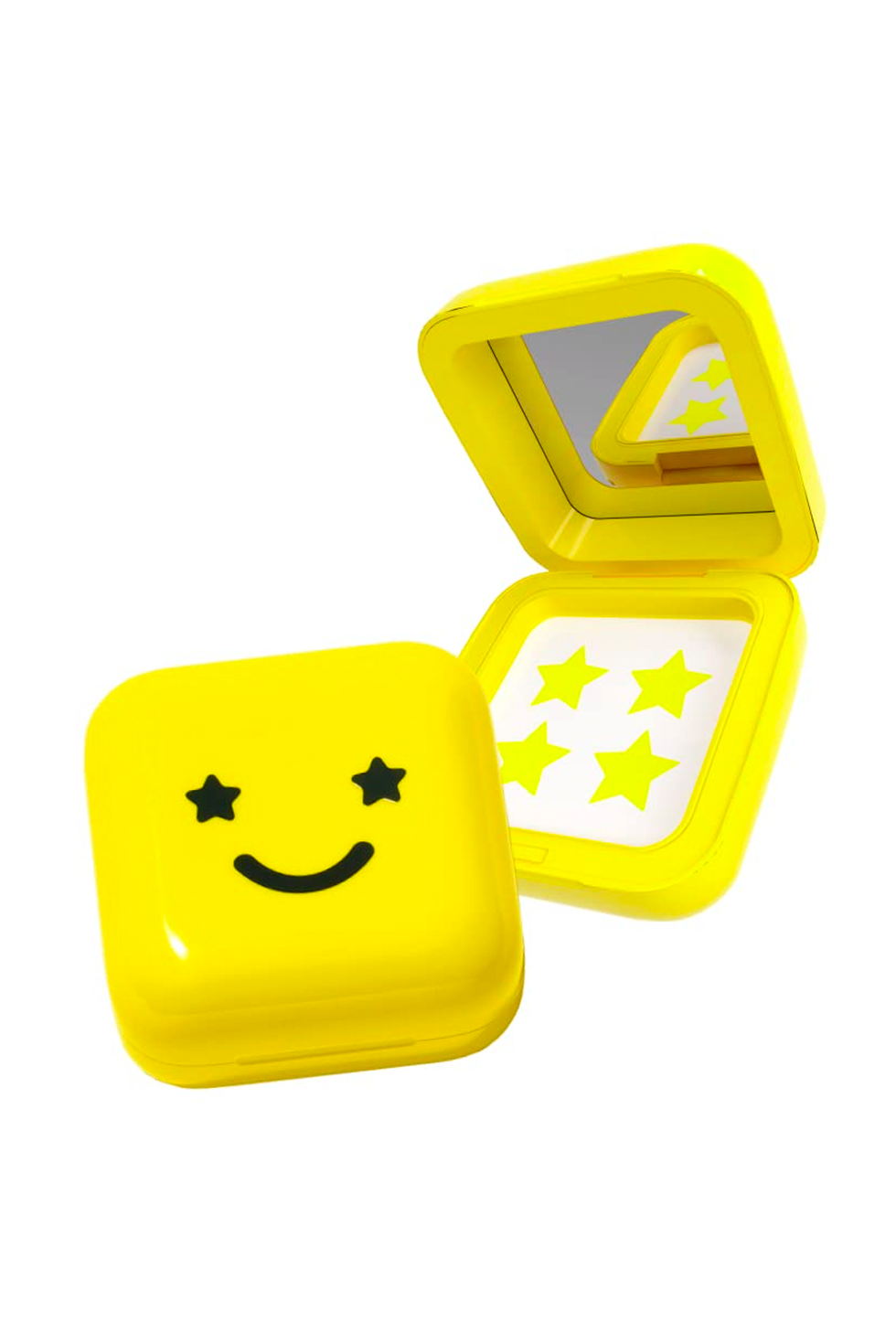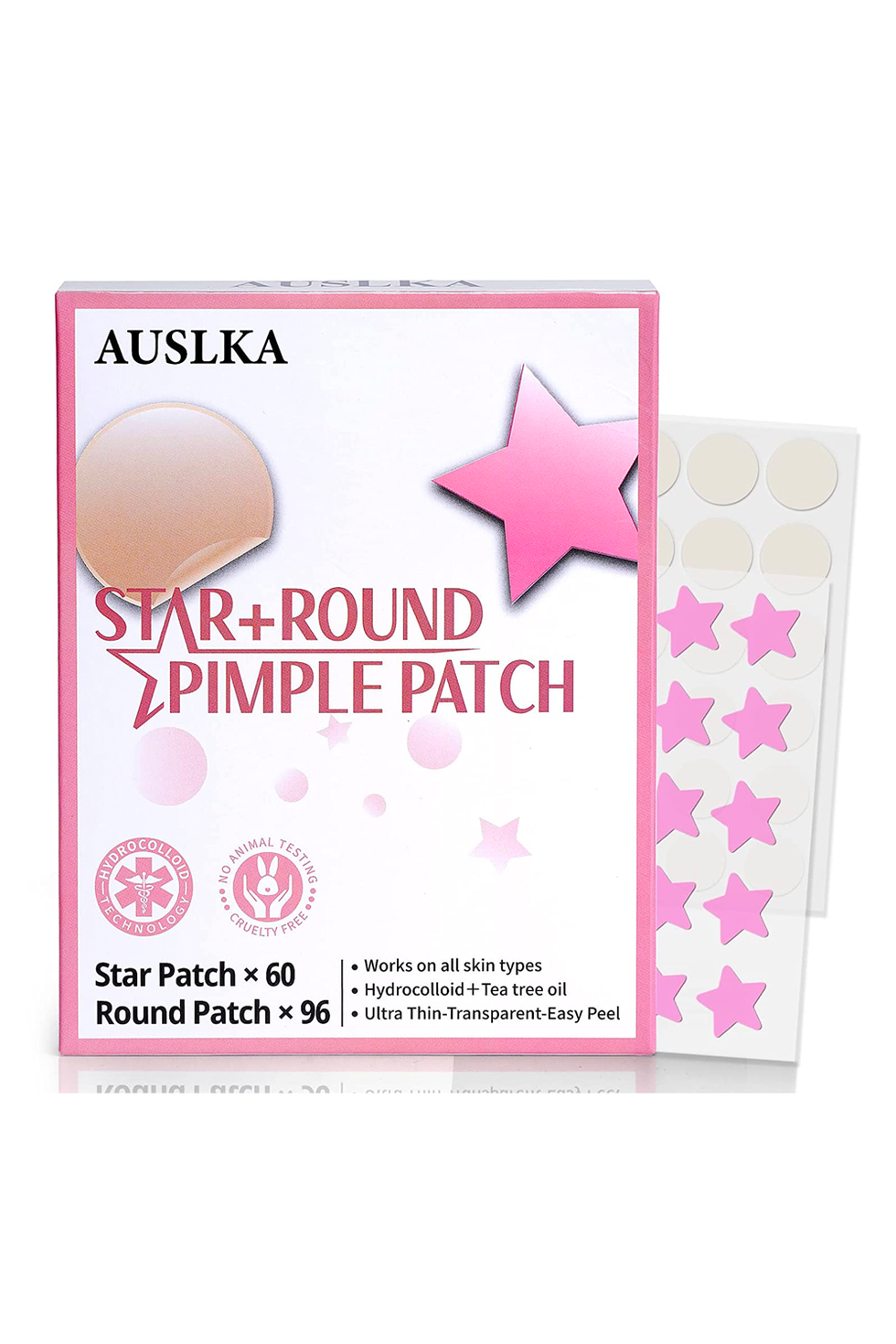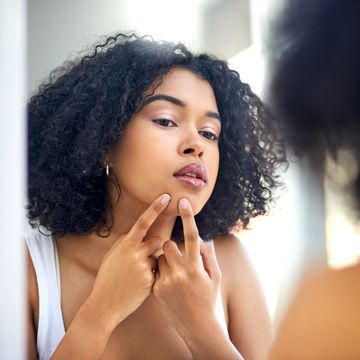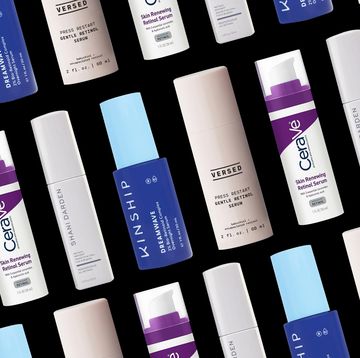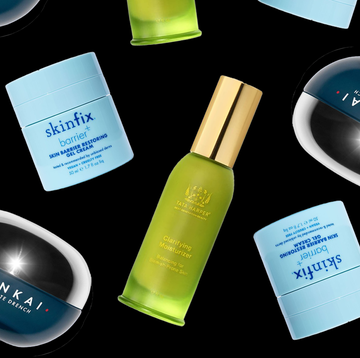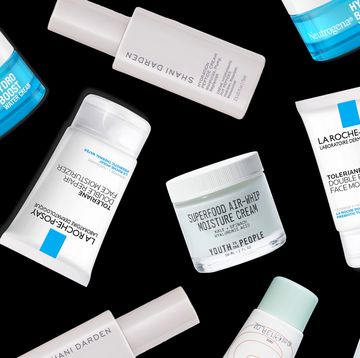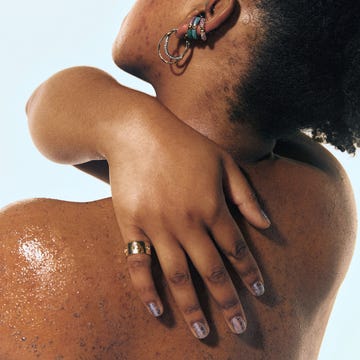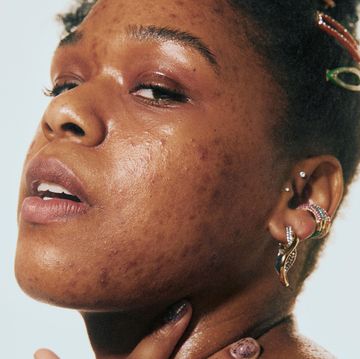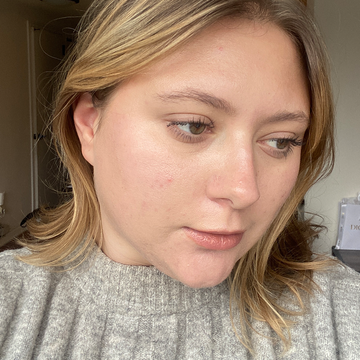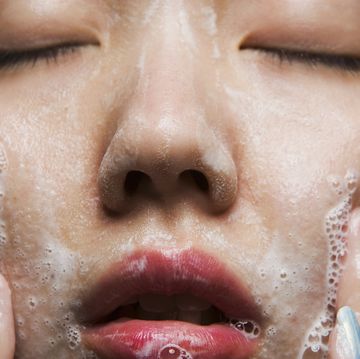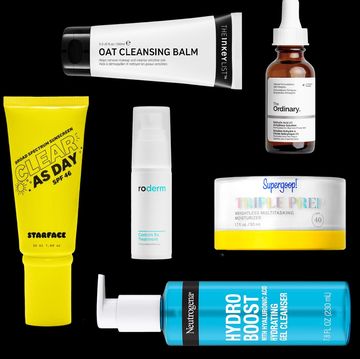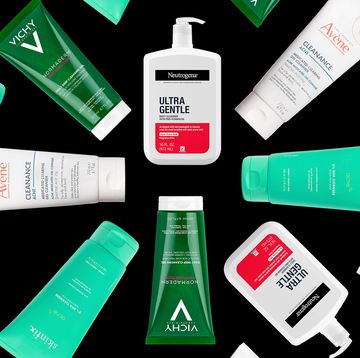I’ve had cystic acne since I was 11, but that doesn’t stop me from still saying “WTF, why is my face breaking out?” every time I get a pimple. Granted, it doesn’t exactly help that I’m constantly changing up my skincare routine, or staying up all night binge-watching Love Island UK (hi, stress acne), or that I often subsist off of $2 pizza slices in place of full meals. But, as it turns out, my lifestyle ~habits~ aren’t even the biggest offenders behind what causes breakouts. In fact, according to the five dermatologists I chatted with, there are a surprising number of unexpected reasons for why your face may suddenly break out.
So if you’ve tried (seemingly) everything to get rid of your acne and prevent breakouts, you’re in the right place. Keep reading to find out what even causes acne, along withthe 13 most common reasons why your face is breaking out and how to treat each one of them, according to dermatologists.
Why is my face breaking out all of a sudden?
Wondering why your face is suddenly breaking out in acne? First, deep breaths. Second, let’s quickly discuss how acne forms: Typical breakouts are the result of hormones and the overproduction of oil. Essentially, your body’s androgens—aka “sex” hormones, like testosterone—trigger your oil glands to overproduce sebum, which can then clog your pores and lead to the growth of acne-causing bacteria called C. acnes (formally known as P. acnes). This bacteria growth creates inflammation within your skin that eventually forms a whitehead, cystic zit, or blind pimple.
That being said, everyone’s skin is different, and your genetics will determine how your body reacts to acne-stimulating hormones. Basically, how frequently you break out is based on “the sensitivity of your sebaceous glands,” says board-certified dermatologist Hadley King, MD. So if your sebaceous glands are naturally more sensitive to being stimulated by acne-causing hormones than, say, your best friend’s (again, thanks DNA), you’re going to break out significantly more than they would.
But don’t be discouraged: A dermatologist can help you determine the causes of your acne and create an effective treatment plan for your skin. Even if you don’t have insurance or access to a doctor, you can still try a virtual dermatologist service like Curology and Apostrophe that pairs you with a provider who can prescribe prescription-strength medications.
But before you make that appointment, let's look at the most common contributors to adult acne:
13 reasons you might be breaking out
Though, yes, your hormones play a massive role in your breakouts, they’re not the only factor. So if you’re trying to better understand—and prevent—acne flares, you may want to examine your daily habits for potential zit triggers, including these 13 common (and possibly surprising) reasons, according to five dermatologists and an aesthetician who treat breakouts every single day.
1. Your cloth face mask is breaking you out.
If you've noticed more breakouts on your chin, jawline, and cheeks after longer periods of wearing your cloth face mask, you’re probably dealing with mask acne—aka maskne. Maskne is caused by the mix of sweat, oil, bacteria, and humidity trapped under your mask that not only leads to pimples, but also dryness, itchiness, and blotchiness (thanks to the friction of your mask against your skin).
How to fix it:
To help treat mask acne, switch to a lightweight, breathable cloth face mask to help prevent excess oil and sweating. Also, if you can't commit to washing your mask after every use, try to stock up on a few face masks so you always have a clean one on hand to prevent rubbing old oil and bacteria back onto your skin each time you slip it on.
If you can’t easily swap masks during the day, try carrying a tea tree oil-based face mist in your bag to spray on your skin (tea tree oil, as a reminder, has antibacterial properties that may help stave off some pore-clogging bacteria). Still, this isn’t a substitute for a clean mask and a clean face, so as soon as you're done wearing your mask for the day, wash your face with a moisturizing cream cleanser (or swipe your skin with micellar water and a cotton round if you don’t have time) to remove excess oil and sweat.
2. You're not washing your face before bed.
During the day, dirt and oil (and makeup, if you’re wearing it) naturally accumulate on the surface of your skin, even if you barely moved from the couch. If you don't wash your face before going to bed, you’ll transfer all of that grime to your pillowcase, which will then get transferred back to your face again the next night. A few nights on a dirty pillowcase may not result in zits, but repeated exposure can cause inflammation, irritation, and breakouts, says dermatologist Joshua Zeichner, MD.
How to fix it:
First, you need to wash your face every single night if you’re trying to prevent breakouts. Try a 2 percent salicylic acid cleanser to help break down some of the excess oil in your pores without leaving your skin dry and tight. If your acne doesn’t show improvement after three weeks, try incorporating a 5 percent benzoyl peroxide wash twice a week to help kill some acne-causing bacteria. And if you wear makeup—which tends to stick around even after cleansing—try double cleansing at night: first, remove makeup with an oil-based makeup remover (like a cleansing oil or balm), then follow with your regular face wash to remove any residue without drying out your skin.
But remember: A clean face doesn’t do much if your pillowcase is covered in makeup, sebum, and bacteria. Try to wash your pillowcase every few days (or keep some inexpensive pillowcases on hand to swap every other night). You may also want to switch to a satin or silk pillowcase, which can reduce friction on your skin and hair, and also soak up less moisture and skincare products than your traditional cotton pillowcases.
3. Stress and lack of sleep are triggering breakouts.
When you’re under pressure, your body produces stress hormones, like cortisol, that can stimulate your oil glands to overproduce oil, leading to clogged pores, says board-certified dermatologist Jeanine Downie, MD. Stress acne can be a vicious cycle: Break out from stress, feel more stressed because you’re breaking out, then break out some more.
A lack of sleep can have a similar effect, too: "Not getting enough sleep means that our body is exposed to continuously high levels of cortisol, which can trigger breakouts,” says Dr. Zeichner. So even if you don’t feel particularly stressed, your sleep-deprived body can still release cortisol-spiking hormones that can bind to your oil glands, send them into overdrive, and cause pimples.
How to fix it:
If your zits are painful and under the skin, try dabbing on a 1 percent hydrocortisone cream, which can help reduce some redness and inflammation. But the long-term solution? Sleep more, and see a doctor or therapist for some strategies to cope with stress (like meditating, exercise, self-care, or taking medication).
Your doctor may also prescribe a hormonal acne medication, like oral spironolactone, a blood pressure medication that’s prescribed off-label for acne because it blocks your androgens from overproducing oil. It’s often prescribed with combination birth control pills and is generally well-tolerated with few side effects.
4. You're drying out your face.
Dry skin in general is a major acne causer, whether the dryness comes from your genetics, your outdoor habits, or your skincare routine, like using too much—or too little—of certain products. If, for example, you tend to load up on spot treatments at the first sign of a bump, you may be drying out and irritating your skin, leading to a compromised and broken-out skin barrier, says licensed aesthetician Samantha Wright.
And despite what your brain may be telling you about your shiny T-zone, even oily skin needs moisture to function properly and both prevent and heal acne. If you’re constantly using intense acne products to dry out your skin, your face probably needs a little hydration and relief, which might be why it’s looking extra shiny lately and causing more breakouts.
Another surprising dry-out factor? The sun. Sun exposure drains moisture from your skin and can trigger excess oil production—which, in turn, can lead to clogged pores. So even though it may feel logical to “dry out” your oily skin and acne with a full day in the sun, it’s actually doing more harm than good for your breakouts (and for your health itself).
How to fix it:
If your skin constantly looks and feels dehydrated or dry, you’ll need to increase your moisturizers and decrease the number of drying actives in your routine (like acids, retinoids, etc.). Make sure you’re layering on an oil-free moisturizer every morning and night to help restore moisture to your skin barrier. Note: If your skin is very oily, choose a gel-based formula that sinks in quickly and won’t feel greasy or heavy on your skin.
When it comes to spot treatments, dab a single formula (like a salicylic acid, benzoyl peroxide, or sulfur-based spot treatment) onto your pimple three times a week max. And if your skin feels itchy, tight, or burns, stop using all actives for at least five days and soothe the irritation with a dab of 1 percent hydrocortisone cream twice a day.
5. Your face scrub is making your breakouts worse.
If you’re scrubbing your face every day with a washcloth, a gritty acne face wash or face scrub, a loofah, or a cleansing brush, you may not only be exacerbating current breakouts, but also causing more breakouts in the process. Why? Because harsh scrubs create micro tears and inflammation on the surface of your skin, messing with your skin’s protective barrier that, in turn, can trigger breakouts.
How to fix it:
Instead of using gritty scrubs, exfoliate your face with a mild chemical exfoliant that contains AHAs or BHAs, like lactic, salicylic, and glycolic acids, to help break down dead skin cells that can hang out in your pores and lead to breakouts. Start slow: two nights a week at first, working your way up to three nights a week max.
6. The ingredients in your products are causing acne.
Your acne might actually be a result of the ingredients in your products clogging your pores. Mineral oil, for example, is a super-thick moisturizing agent found in some face moisturizers and creams that could be too heavy if you're prone to blackheads and whiteheads, says Dr. Downie. Coconut oil is also notorious for causing breakouts if you’re acne-prone. Additionally, fragrance (especially irritating for sensitive skin) and sulfates (an oil-stripping surfactant) can be found in many products and can cause inflammation and redness that aggravates existing breakouts.
How to fix it:
Gather all of your products and check the ingredient labels for a few red flags: Mineral oil, coconut oil, sulfates (especially sodium lauryl sulfate and sodium laureth sulfate), added fragrance, and essential oils. Just note: While an ingredient might make my face erupt in whiteheads, the same ingredient could make yours glow and thrive. Skincare is, annoyingly, trial and error, but these ingredients are generally a good place to start if you’re prone to breakouts.
7. Your hair products are clogging your pores.
Although butters and oils (like jojoba oil, coconut oil, and plum oil) are excellent for softening and smoothing hair in hair products, they can potentially cause breakouts when they settle on your skin and scalp. (True story: My persistent bacne all of high school ended up being a result of a heavy conditioner washing down my back every time I showered.) Not to mention, if you have sensitive skin, your sulfate-filled shampoos could be causing irritation, leading to dry patches, blotchiness, and itchiness that could just be making acne worse.
How to fix it:
Switch to a sulfate-free shampoo and limit your sulfate-based clarifying shampoos to twice a month. If your breakouts tend to happen along your hairline, try massaging a salicylic acid scalp treatment along your scalp once a week before hopping in the shower. And to help avoid acne on your body and face, don’t get out of the shower without rinsing off your body a final time. At the end of your shower, clip up your wet hair or wrap it in a towel, then quickly rinse off your face and body to remove any leftover residue from your conditioner.
8. Your sweaty workouts are causing body acne.
It’s understandable if your skin is covered in sweat and grime after a workout. But if you don’t rinse that off immediately afterward, you increase your chance of all that dirt, oil, bacteria, and makeup irritating your skin and potentially leading to clogged pores. Basically, the longer you stay in the same sweaty, sticky clothes, the quicker your skin becomes a breeding ground for bacteria growth.
How to fix it:
Before exercising, remove your makeup with a cotton round soaked with micellar water (or just use your favorite makeup remover). Then after your workout, shower as soon as possible with a salicylic acid-based acne body wash (which can gently break down dirt and oil to keep pores clear). If you can’t shower right away, swipe your skin with a body wipe to help physically remove some of the grime and oil hanging out on the surface of your skin.
If you forgot all of your skincare at home (been there), or your dry skin can’t handle so many washings in a day, just rinse your skin with warm water immediately after a workout instead. It sounds ineffective, but warm water can actually help “break up the sebum and sweat that’s on the top layer of skin,” says dermatologist Diane Madfes, MD.
9. Your laundry detergent is irritating your skin.
Certain chemicals and fragrances in laundry detergents can be too harsh for sensitive skin, according to Dr. Downie. Once you slip on your clothes or use your bath towels, your face can react to the residue that’s left on the fabric, resulting in breakouts on your face, back, butt, chest, etc. If you recently switched to a new detergent and noticed a few breakouts afterward, you might have found one of your problems.
How to fix it:
Choose a hypoallergenic detergent, meaning it’s free of fragrances and dyes (these will usually have “free and clear” on the label, so somewhat simple to find), and wash your clothes, sheets, towels, and bedding in this new detergent twice. If you don’t see an improvement in your breakouts, your acne might not be caused by your laundry detergent, so talk to your dermatologist about other potential acne solutions.
10. Your favorite foods could be causing breakouts.
According to Dr. Downie, tomatoes and peppers contain acidic lycopene—a somewhat common irritant that can throw off the skin’s pH levels and trigger breakouts around the mouth. But it isn’t just spicy foods that cause acne: Some skin reacts negatively to ingested dairy, gluten, and other foods, too. A recent change in your food habits—like if you went vegan and are suddenly eating more carbs, or you stopped being vegan after eating plant-based long-term—could also be causing breakouts based on a change in your glucose levels, says board-certified dermatologist Karan Lal, MD.
How to fix it:
Talk to your dermatologist or make an appointment with a gastroenterologist to see if the food you’re eating is the source of your acne, or if something is going on in your gastrointestinal tract. They’ll likely ask you to create a food intake journal and track what you eat, along with how your skin reacts.
11. Your smoking habit is damaging your face.
You already know that smoking is terrible for your health and the health around you (according to the CDC, one in five people die every year from cigarette smoking—roughly 1,300 people a day). That being said, smoking is also just terrible for your skin. Every time you light up a cigarette, you decrease the amount of oxygen that goes to the skin on your face, Dr. Downie explains. And, considering your skin is your largest organ, you’re essentially suffocating it.
Smoking also causes the breakdown of collagen and elastin, which leads to wrinkles and increased pore size over time. Plus, the carcinogens in the smoke can quickly irritate your skin and dry it out, triggering an overproduction of oil and, possibly, more breakouts. So, all-around, smoking just isn’t ideal for your skin (or life expectancy).
How to fix it:
It’s simpler said than done, but the first thing a dermatologist (or any doctor) will tell you is to stop smoking. If you need help, reach out to your primary care doctor who can help you come up with a plan (especially if you’ve been smoking for a long time).
In the meantime, a topical retinoid for acne will help speed up cell turnover and dissolve dead skin cells, which can result in fewer clogged pores over time. Dr. King suggests starting with over-the-counter adapalene, like Differin, but your dermatologist can prescribe a higher-strength prescription retinoid, like tretinoin, which can work more quickly, but tends to be more irritating and drying. When you’re first starting with a retinoid, use it one night for one week, then two nights for two weeks, until your skin can tolerate three nights a week.
12. You're making your pimples worse by picking your face.
We get it: Popping your whiteheads and blackheads is tempting. But when you try to press the blackhead or pus out of your pore, you risk pushing the bacteria deeper and making breakouts worse by creating more inflammation and introducing bacteria into your open wound. In fact, touching your skin at all with your fingers, let alone messing with active breakouts, can transfer bacteria from your hands onto your face, Dr. Downie says, risking even more pimples.
How to fix it:
Avoid touching your skin as much as possible, including resting your chin on your hand or embarking on a full at-home extraction session. Instead, try sticking on an opaque pimple patch to put a physical barrier over your pimple to help keep your hands off of it (and to prevent more bacteria from getting to the zit).
13. You're not actually dealing with acne.
Sometimes, the pimples you're trying to treat aren't technically acne, which would explain why your usual treatments aren't working. If your breakouts are popping up around your hairline, forehead, chest, or back and look like small, itchy red or brown bumps that are roughly the same size, you might actually have folliculitis or fungal acne (aka Malassezia folliculitis), which is an inflammation of the hair follicles and requires a very different approach than your run-of-the-mill whiteheads.
How to fix it:
If you think you might have fungal acne, see a derm first for a diagnosis. Your doctor might recommend an over-the-counter dandruff shampoo that contains zinc pyrithione or selenium sulfide, which can help kill the excess yeast on your skin that’s causing the breakouts. Rub the shampoo across your skin, wait three minutes, and then hop in the shower and rinse. If your acne still isn’t getting better after six weeks, it might require a prescription dandruff shampoo or anti-fungal cream from your dermatologist.
Frequently asked questions
How long do breakouts last?
How long a breakout lasts depends on the type of breakout and why you’re breaking out. A whitehead can last anywhere from two to eight days, while blind pimples can last anywhere from a week to a few months. Blackheads, however, can persist for weeks to months to life (pores are always going to fill back up at some point).
Plus, if you’re breaking out from maskne, lack of sleep, or overall skin irritation, it’s likely your zits will keep coming back until you make the above changes. So if you want to get rid of a breakout fast, your best bet is to get an appointment with a dermatologist who can identify what exactly your pimple is and come up with a long-term treatment plan.
Still, not all hope is lost if you need your pimple gone asap, says Dr. King. The fastest way to get rid of a breakout is by getting a cortisone shot, where your dermatologist injects a low-dose steroid into your cystic pimple, which can help reduce the inflammation and flatten the zit in three to seven days. Sounds terrifying, but after trying it more than a handful of times myself, I can attest that it merely feels like a pinch and is the only thing that makes my cystic acne go away fast.
Will acne go away on its own?
Acne can go away on its own, if you are washing your face every day, keeping your skin moisturized, not picking and prodding at your zits, and also working with a dermatologist-approved treatment plan. Dr. King says you’ll start to notice a difference in your skin in four to six weeks if you’ve incorporated topical treatments, like retinoids, chemical exfoliants, and benzoyl peroxide or salicylic acid washes, though this timeline depends on what kind of acne you’re dealing with. However, she adds, spot treatments including benzoyl peroxide, tea tree oil, salicylic acid, and 1 percent hydrocortisone start working in just a few days.
Final thoughts
For the most part, treating acne is a long game, whether your breakouts are the result of a high-stress job, sweat and oil building up under your cloth face mask, too many drying actives, or just your sensitive sebaceous glands. Still, regardless of how well you treat your skin, it’s important to remember that acne mostly comes down to genetics and hormones, which is why it’s so vital to see a dermatologist to go over your specific acne causes and treatments. It’s almost like they went to school to fix this kind of thing. Weird.
Meet the experts:
- Karan Lal, MD, is a board-certified dermatologist at Schweiger Dermatology in Hackensack, NJ, and Hillsborough, NJ. Dr. Lal has expertise in medical and cosmetic dermatology, laser surgery, and treating skin of color.
- Hadley King, MD, is a board-certified dermatologist in New York, NY, specializing in cosmetic and medical dermatology. She is also the clinical instructor of dermatology at the Weill Medical College of Cornell University.
- Diane Madfes, MD, is a board-certified dermatologist in New York, NY and Greenwich, CT where she treats all skin conditions, including acne, rosacea, and melasma. She is also an attending physician at Mount Sinai Hospital in NYC.
- Joshua Zeichner, MD, is a board-certified dermatologist in New York, NY, who specializes in acne and rosacea. Dr. Zeichner is also the director of cosmetic and clinical research in dermatology and an associate professor of dermatology at the Mount Sinai Hospital in NYC.
- Jeanine Downie, MD is a board-certified dermatologist at Image Dermatology in Montclair, NJ. She is also the author of Beautiful Skin of Color, a guide to medium to deep and olive skin tones.
- Samantha Wright is a licensed aesthetician and the director of services and client experience at the Dangene Institute in New York, NY.
Why trust Cosmopolitan?
Beth Gillette is the beauty editor at Cosmopolitan with four years of experience researching, writing, and editing skincare stories that range from butt acne to how to get rid of whiteheads. She’s an authority in all skincare categories, but is an expert when it comes to what causes acne, thanks to a decade of dealing with her own breakouts. She regularly tests and analyzes acne products for efficacy, while working with the industry’s top dermatologists to assess new formulas and brands.
Beth Gillette is the beauty editor at Cosmopolitan, where she covers skincare, makeup, hair, nails, and more across digital and print. She can generally be found in bright eyeshadow furiously typing her latest feature or hemming and hawing about a new product you "have to try." Prior to Cosmopolitan, she wrote and edited beauty content as an Editor at The Everygirl for four years. Follow her on Instagram for makeup selfies and a new hair 'do every few months.
